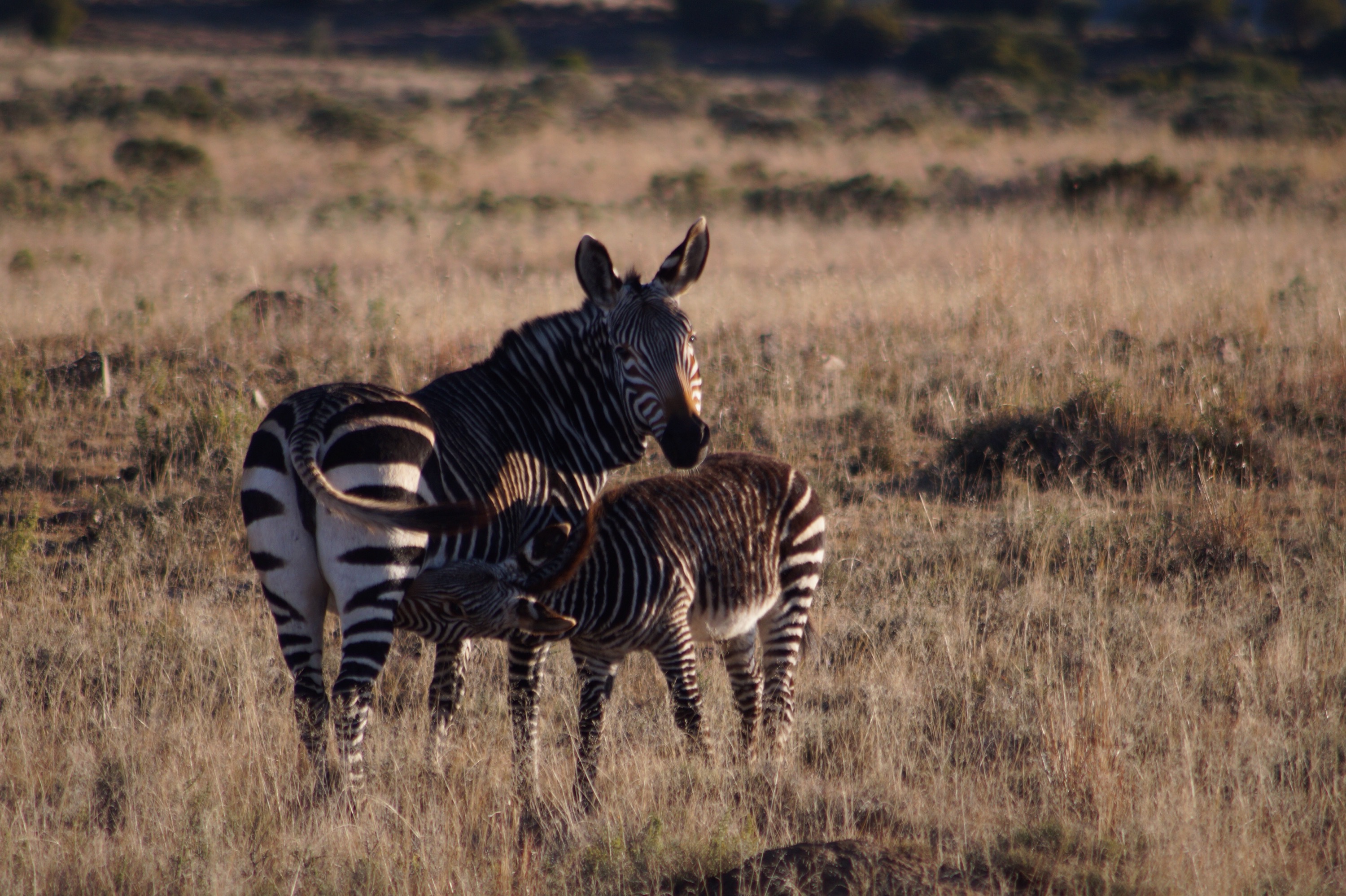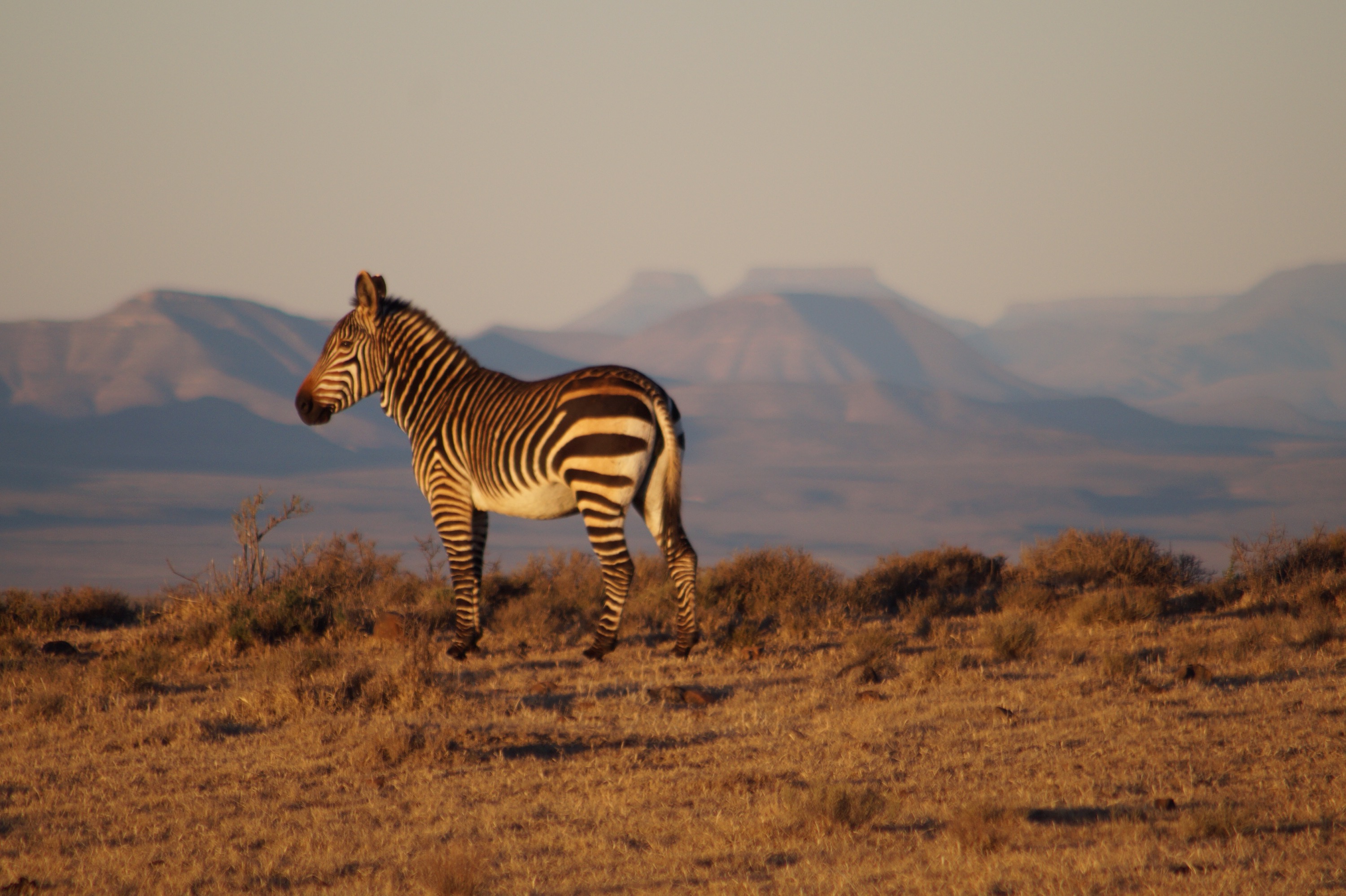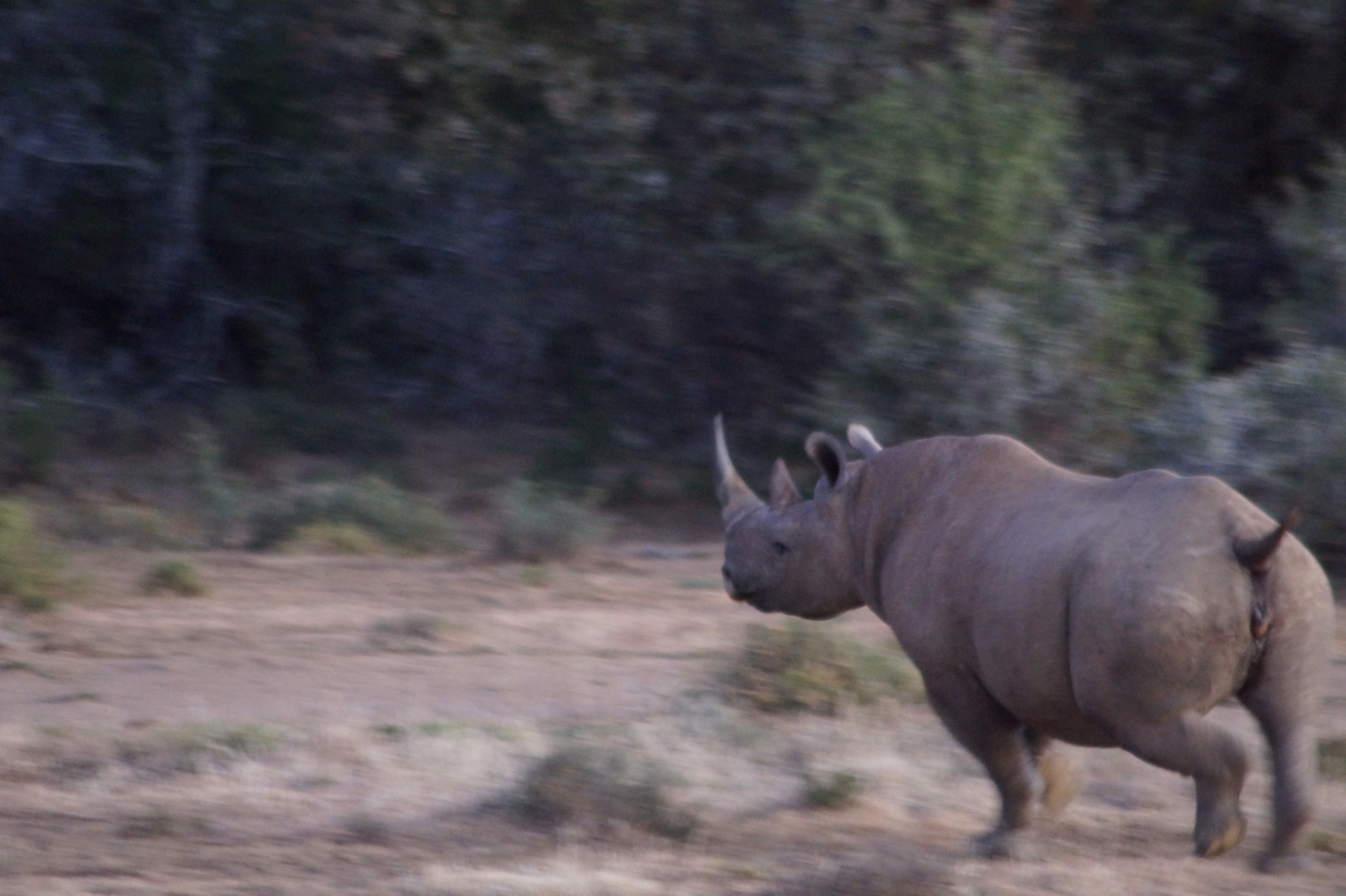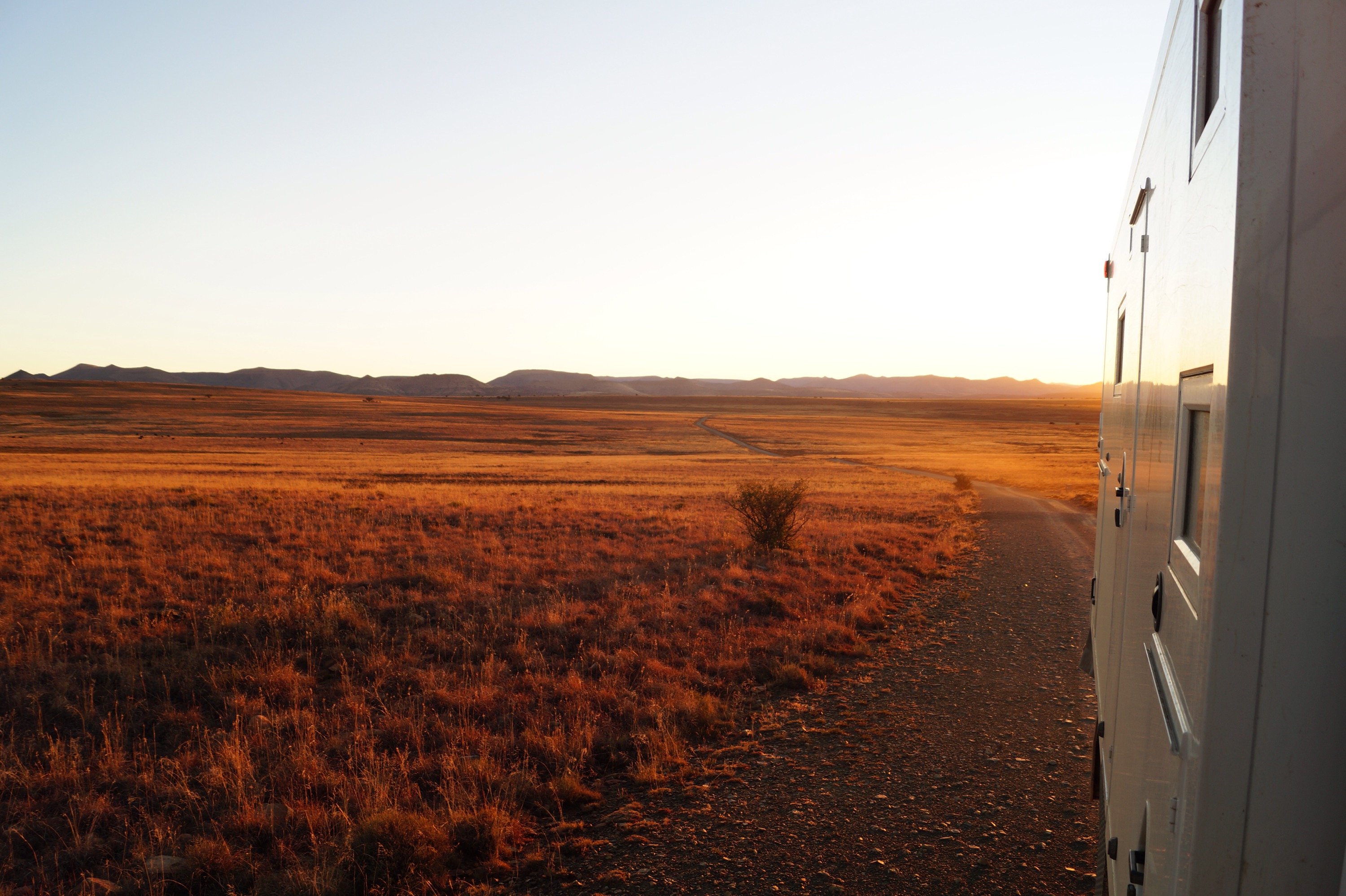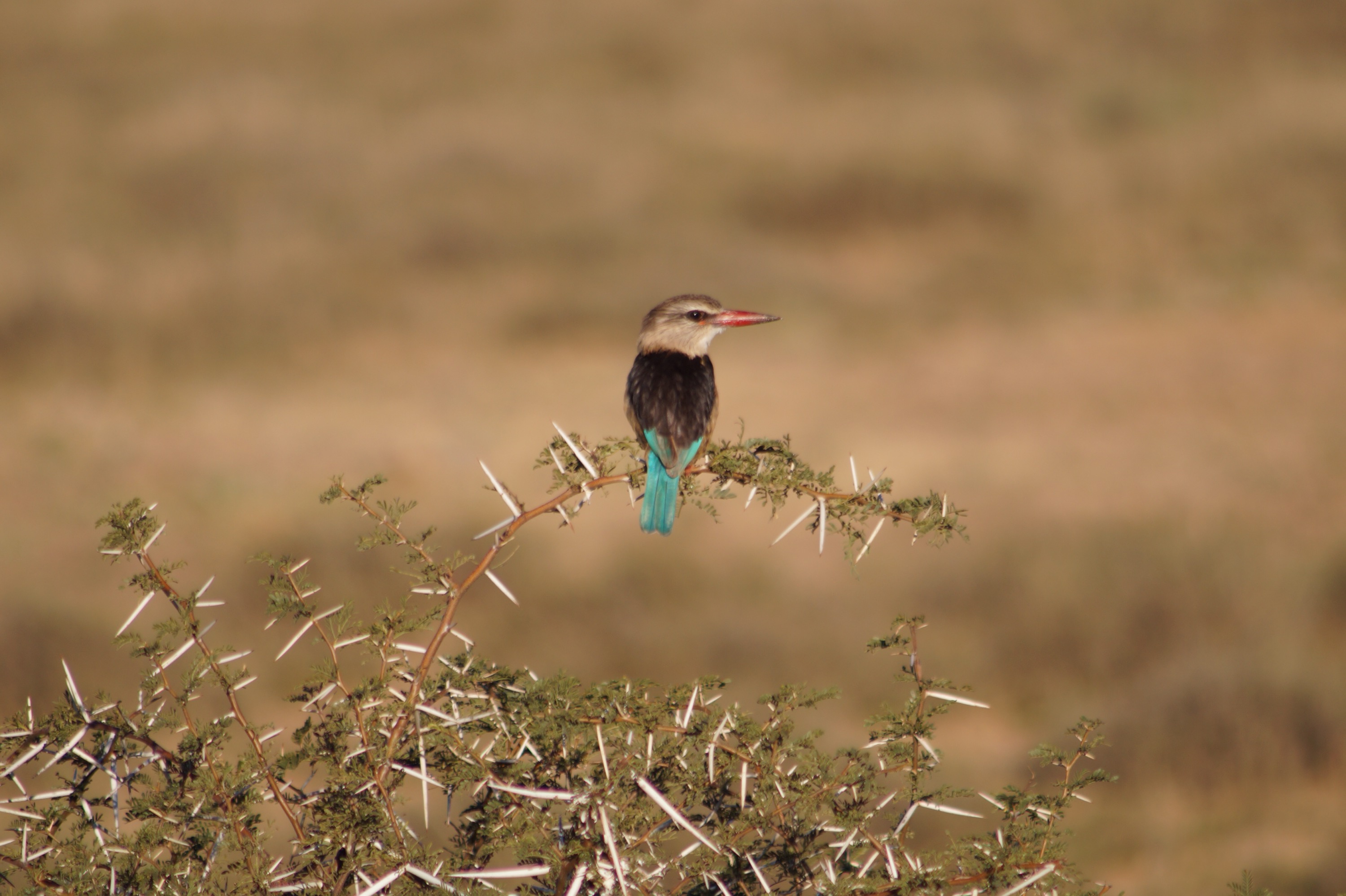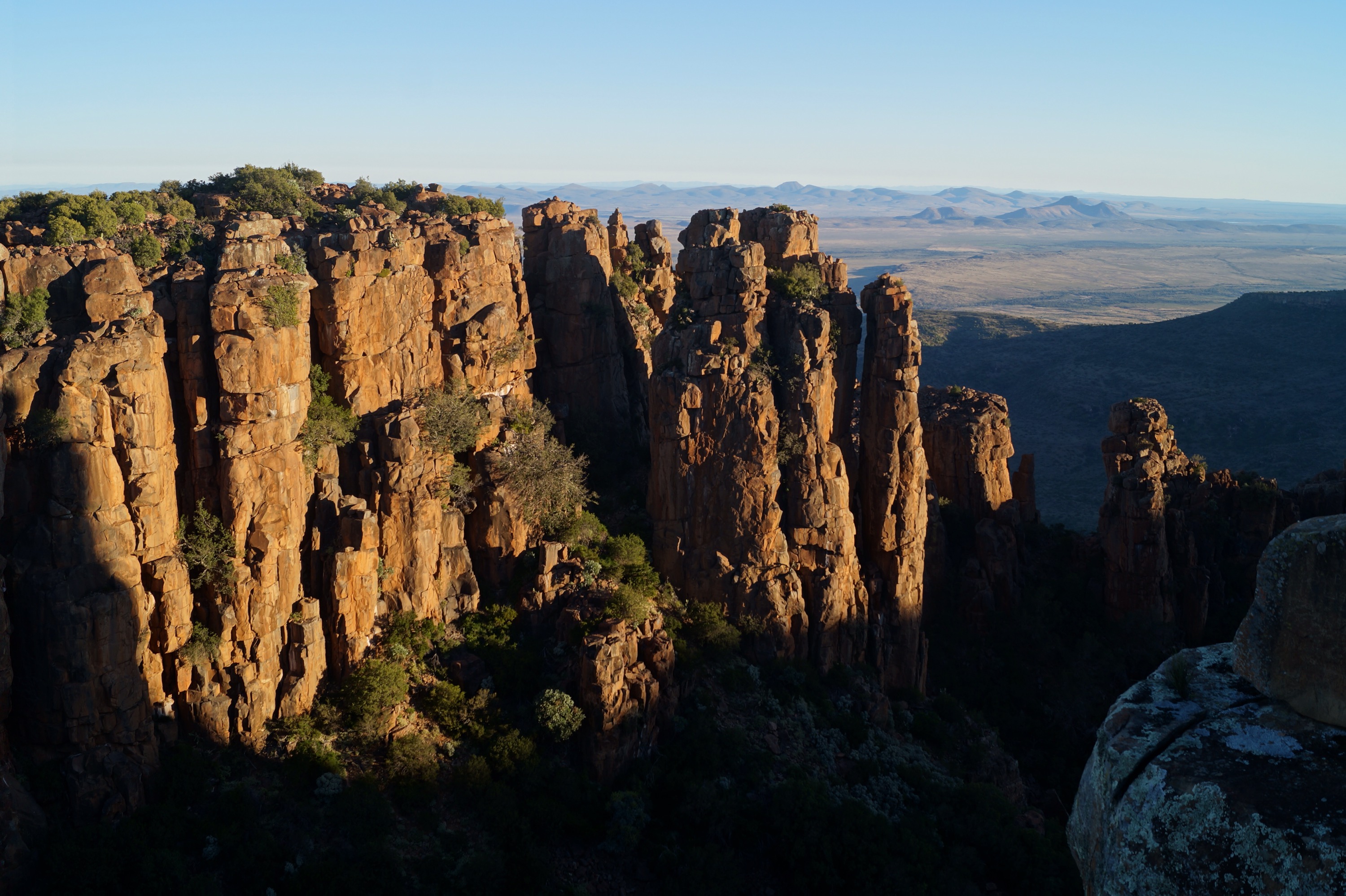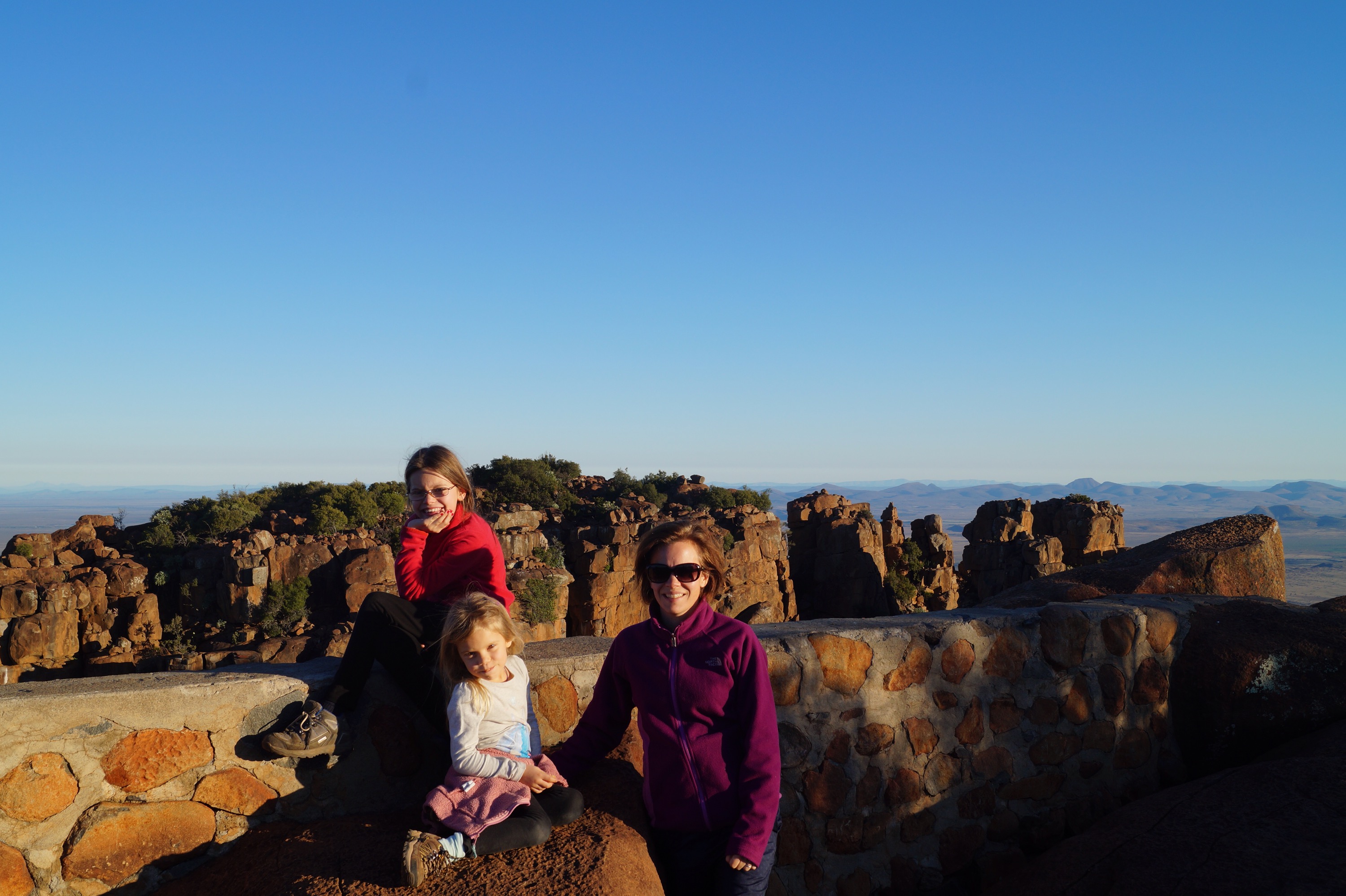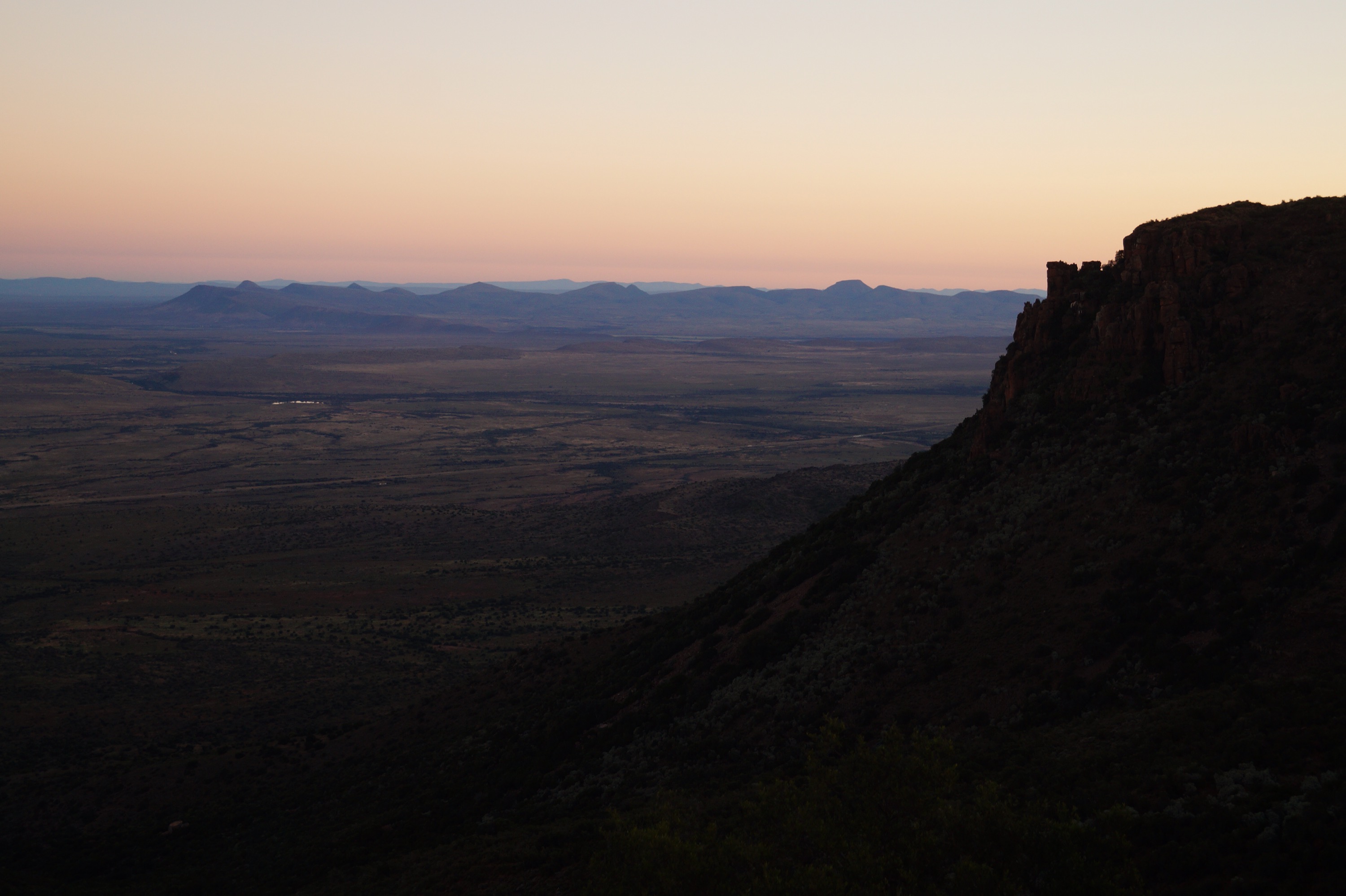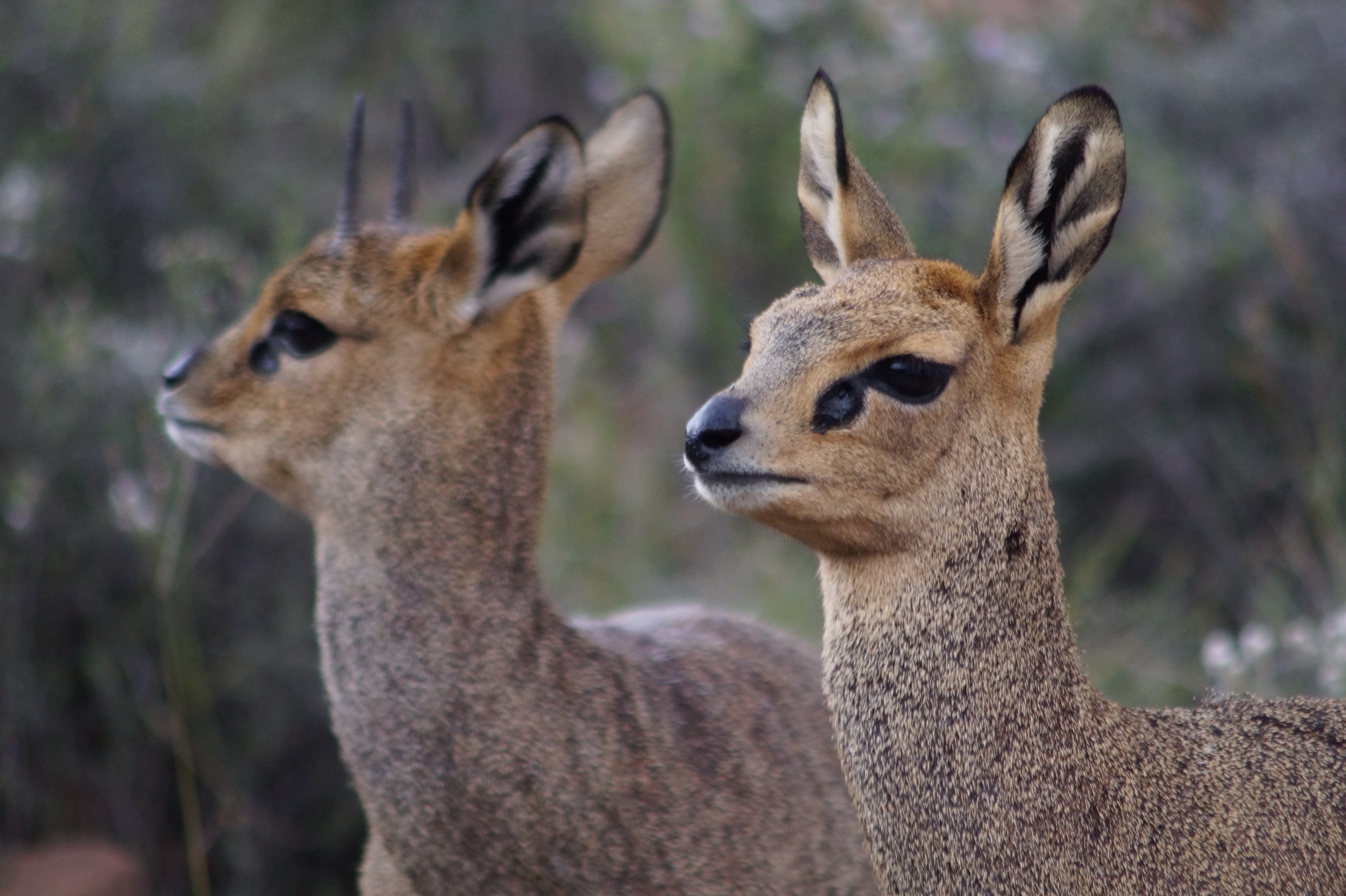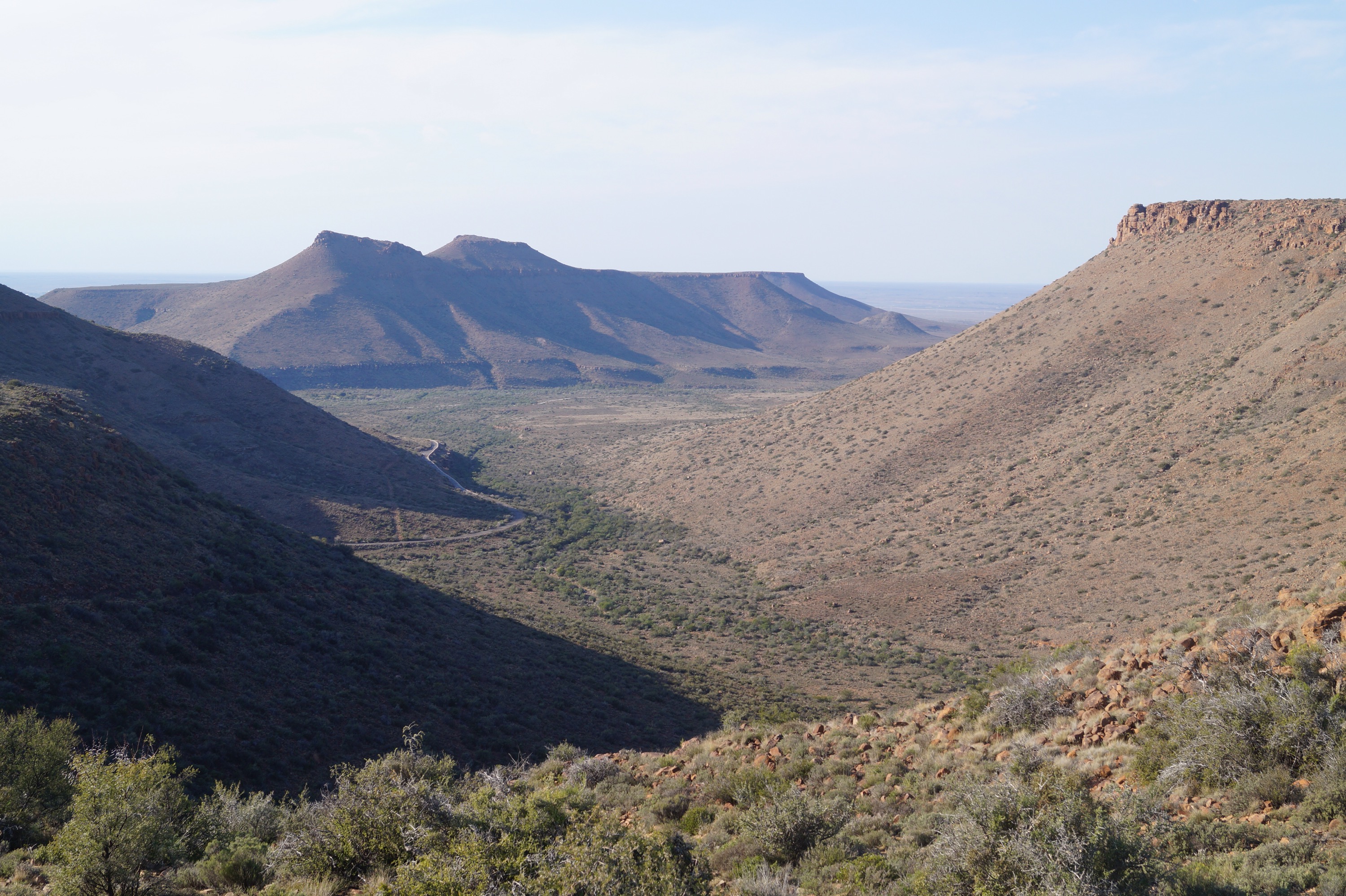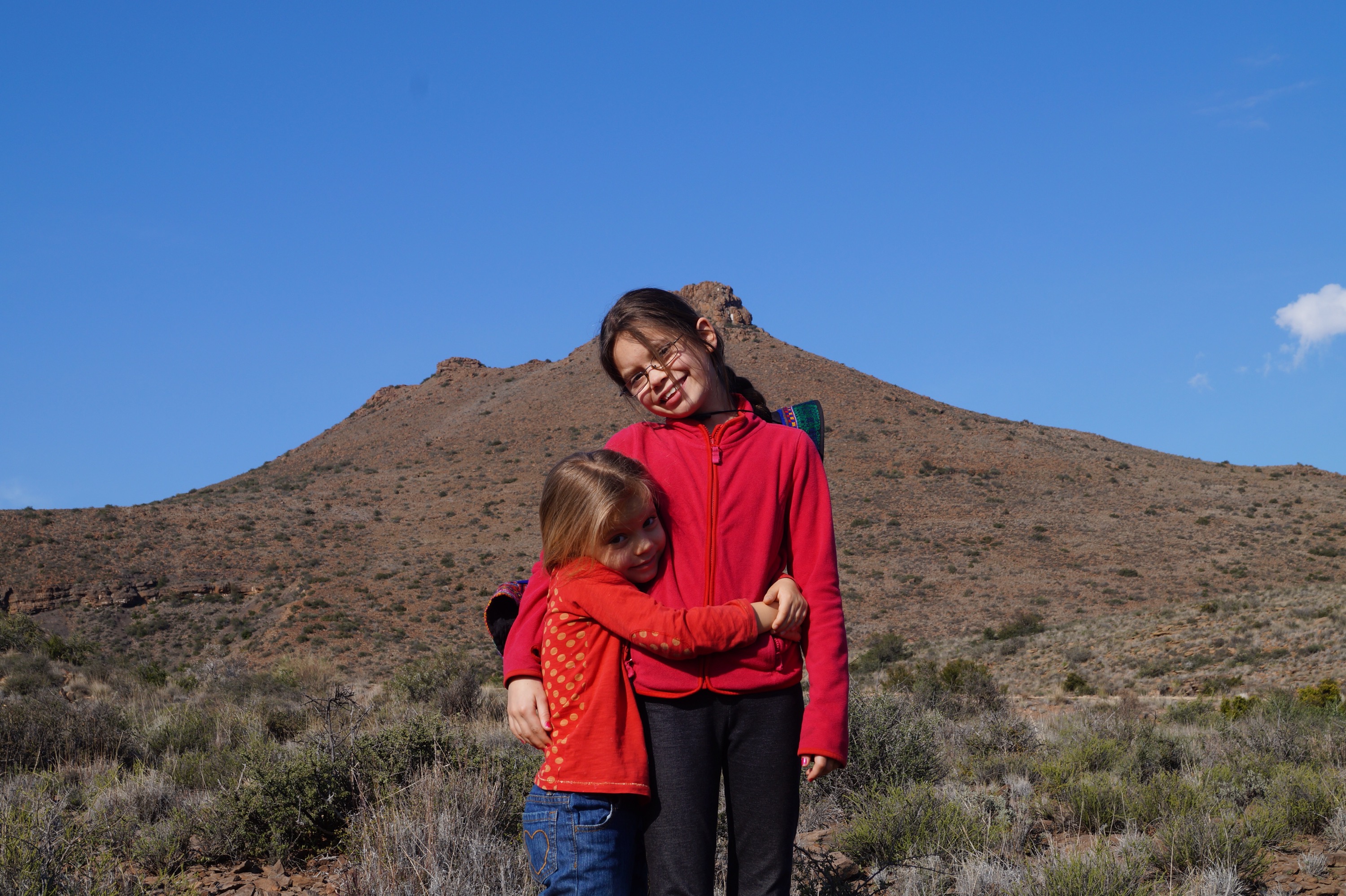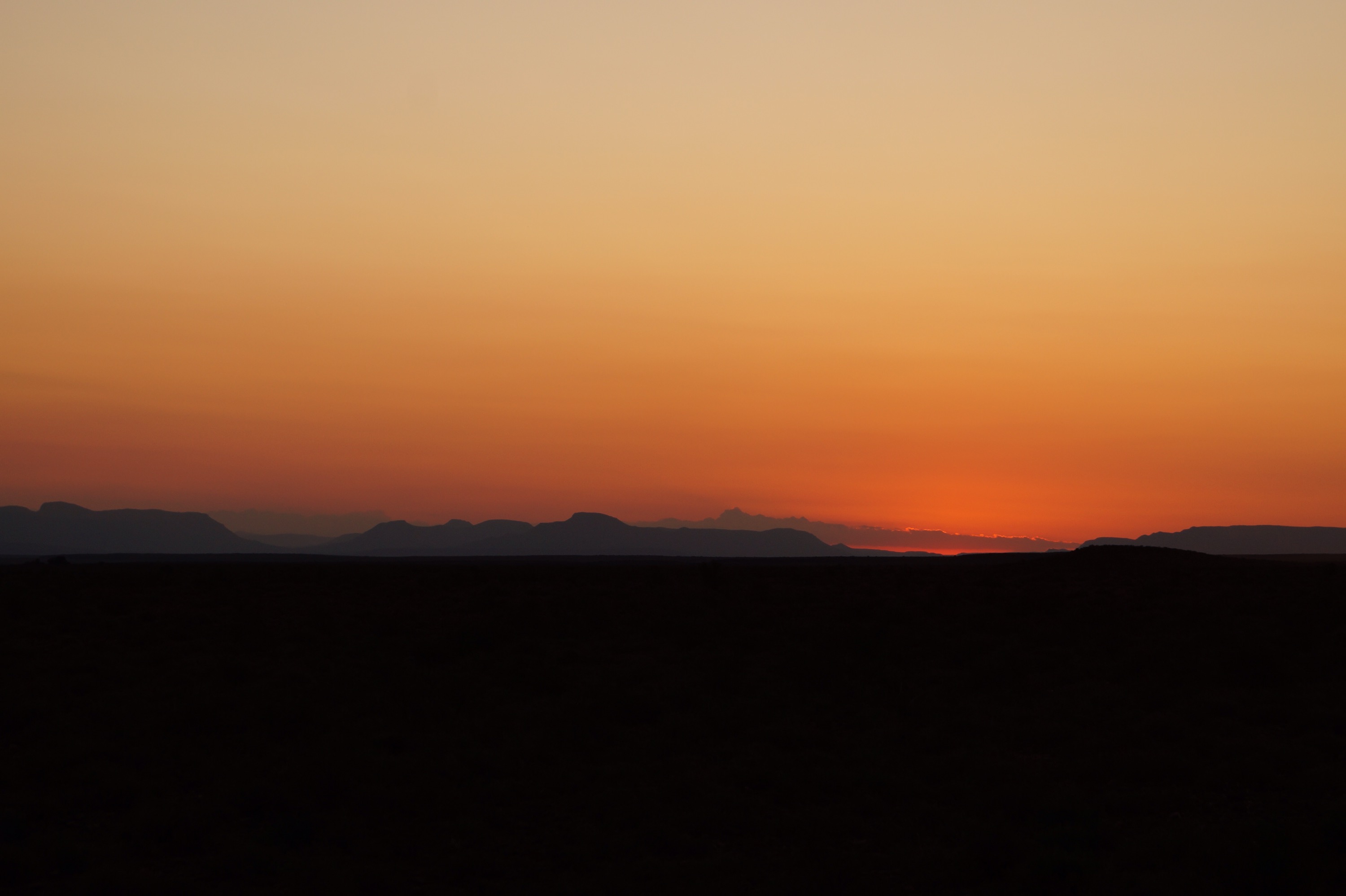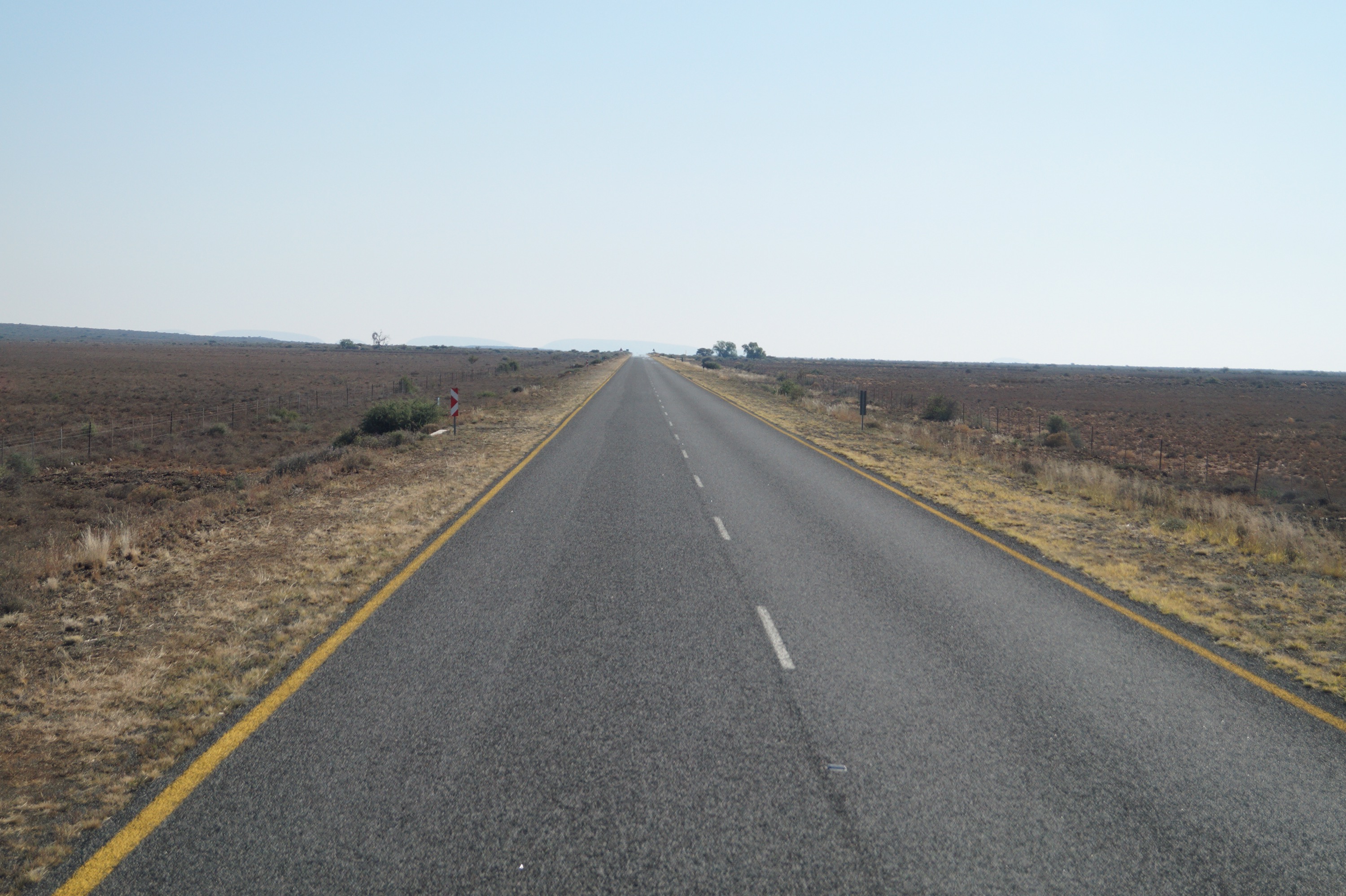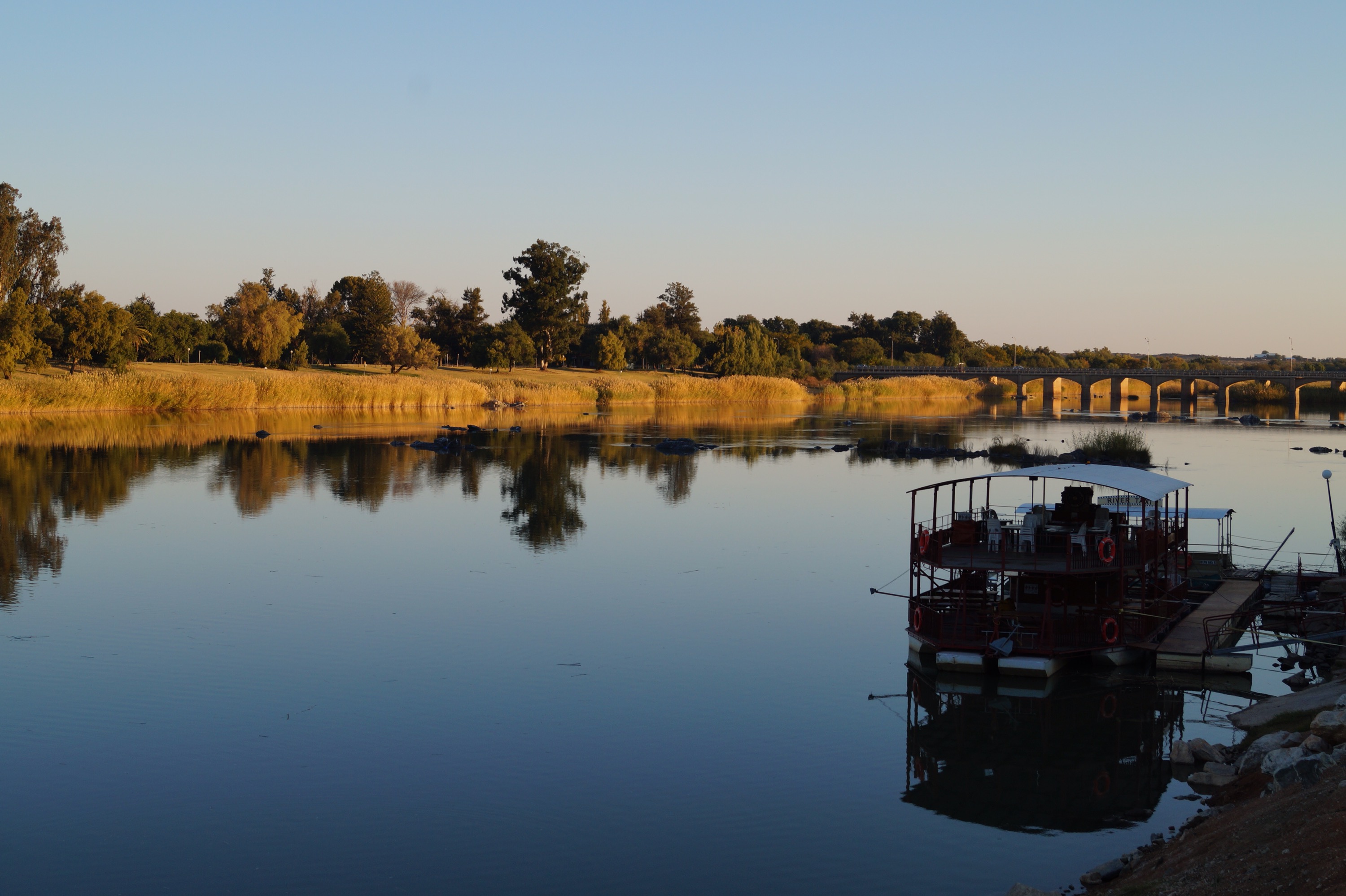I would never imagine that the throbbing of a powerful diesel engine would be the sort of sound to put anyone in the mood for love but I have been proved wrong. It turns out that the truck's dulcet reverberations is the Barry White song equivalent to lusty lions.
We came across two extremely tired looking lions, not unusual for such a languorous species, literally lying on the edge of the road in some bushes. Not wanting to disturb them we kept a few metres back and turned off the engine. I wound up the window quite a lot, they were that close. We watched them dose, yawn and stretch. They were beautiful, just beautiful. The male with a thick black mane that characterises the Kalahari lion, the female with deep amber eyes, that made a shiver go down your spine when she looked directly at you. After 20 minutes we could see a bakkie (south African pick up truck) coming the other way. We signalled frantically to them, so they wouldn't accidentally run over the concealed lions, trying to pass the other side of us on the narrow road. They pulled up just a metre or so from the lions, they were even faster about putting up their window than even we were. All the lions did was flicker an eyelid and go back to sleep. Later after they left without a movement from the snoozing lions, we felt a little more confident that the truck wouldn't disturb them so we crept forward along the road. We actually didn't have any choice as we had to make it a further 120km to the next campsite. However something 3 times bigger than a bakkie moving towards them did cause them to wake up, Steve quickly took his foot off the pedal and turned off the engine. We watched hoping they wouldn't walk off and feeling terrible that we had disturbed such beautiful creatures. But no they didn't move off, just used the disturbance as an excuse for a bit of lion loving. The girls were fascinated to see the facts of life unfolding just a metre from the front bumper. Thankfully they've seen enough natural history programmes to know what was going on. The lions collapsed into an exhausted heap again. We hastily ate lunch, Alisha perched herself on the edge of our bed to eat her tuna wrap to get a view out of the kitchen window. Eventually we felt we had to move on, if we were to get to our booked camp spot before dark. Steve slowly started the engine. The lions roused themselves once more. Oh no! Had he frightened them off ?........ Nope, the engine had stirred them enough for another quicky before we crawled away in the love machine.
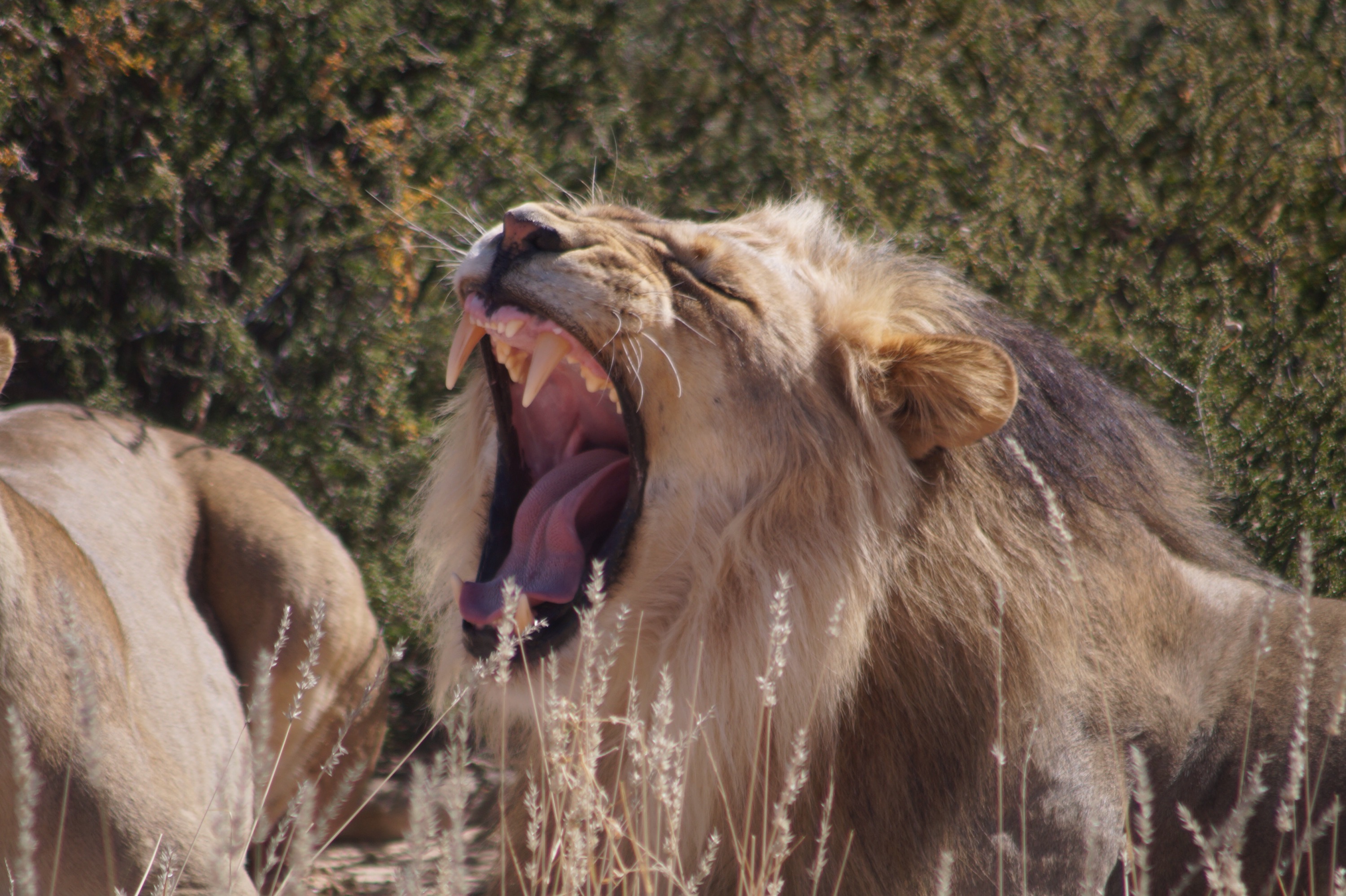

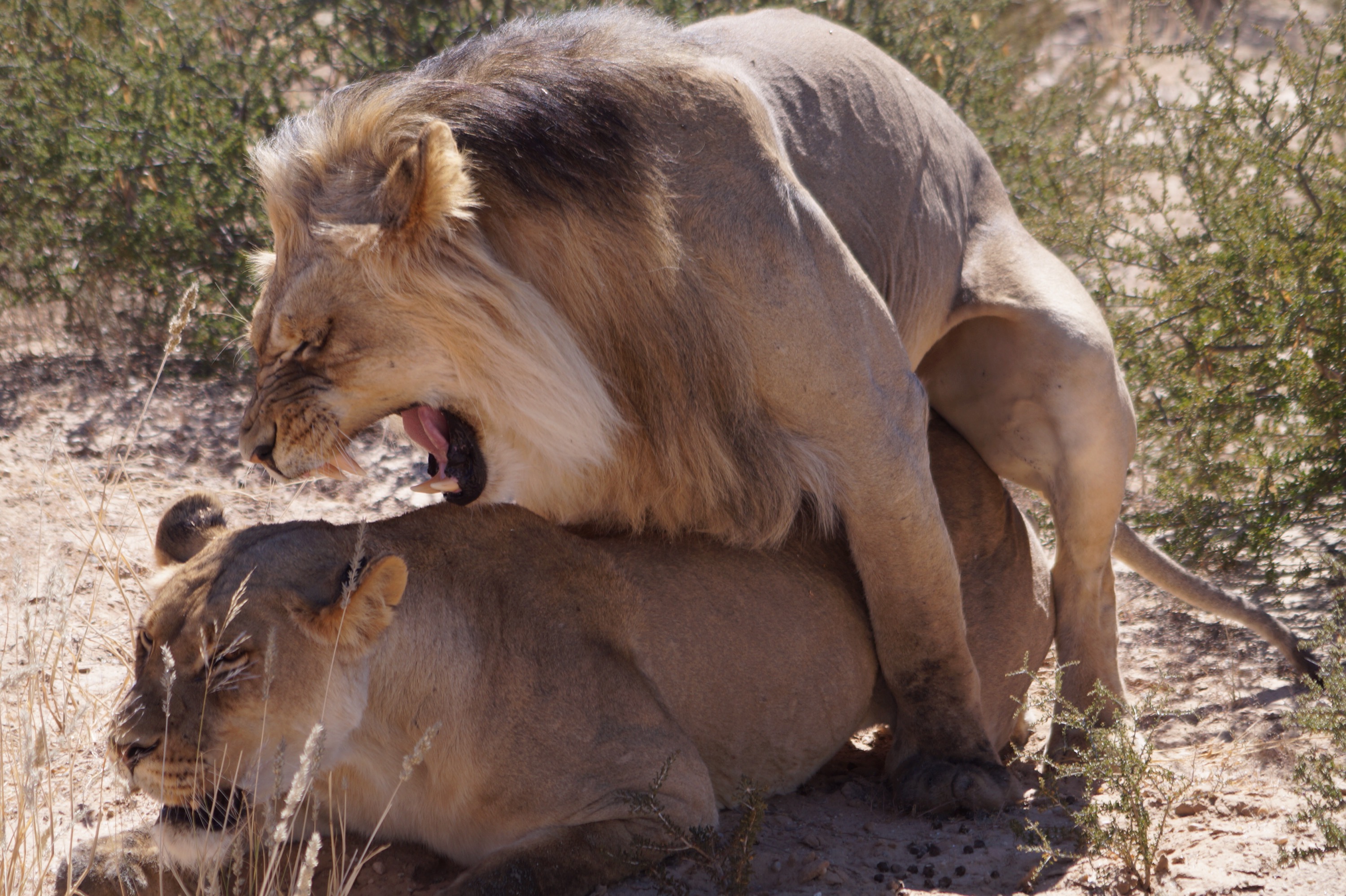

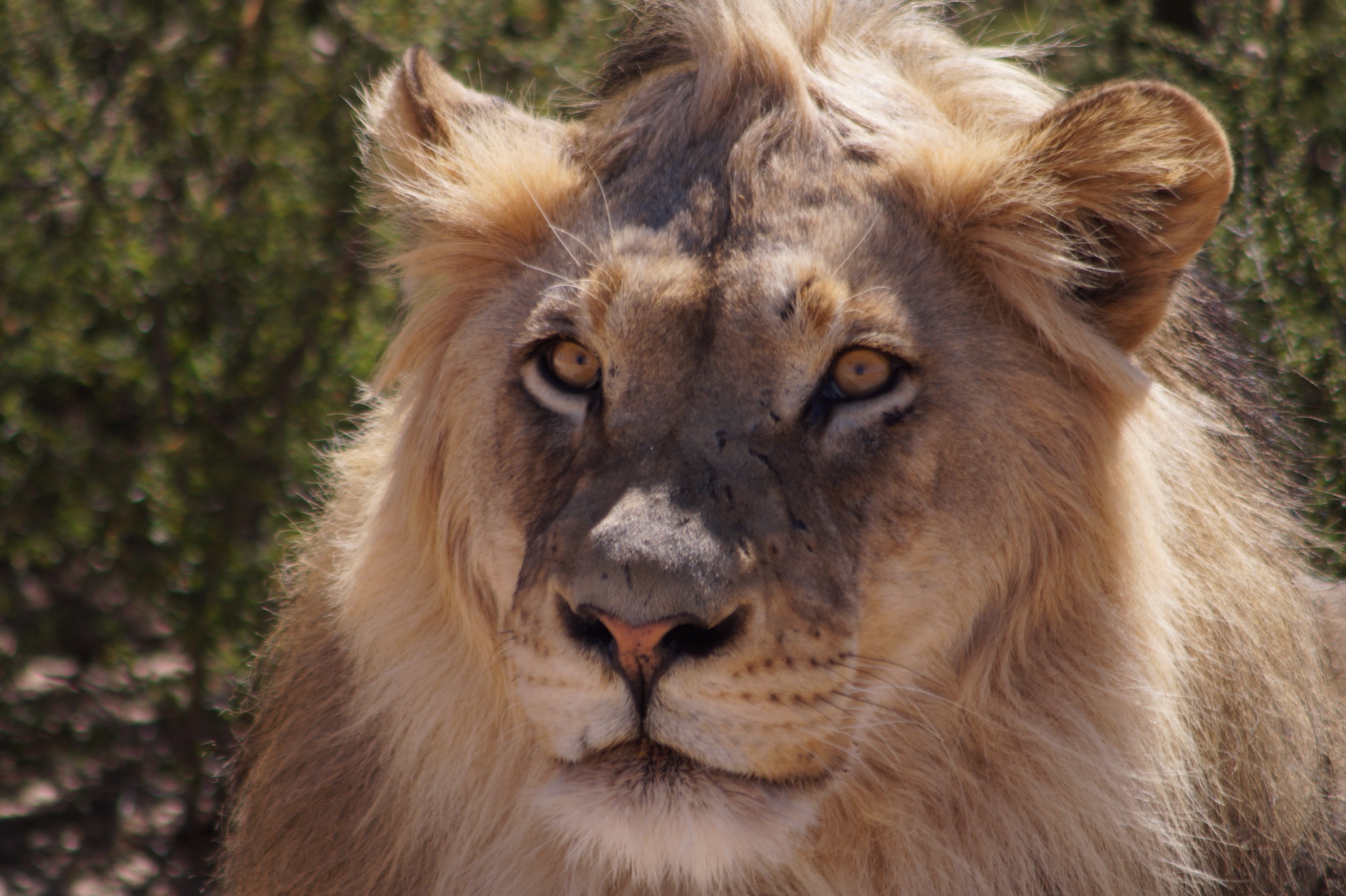
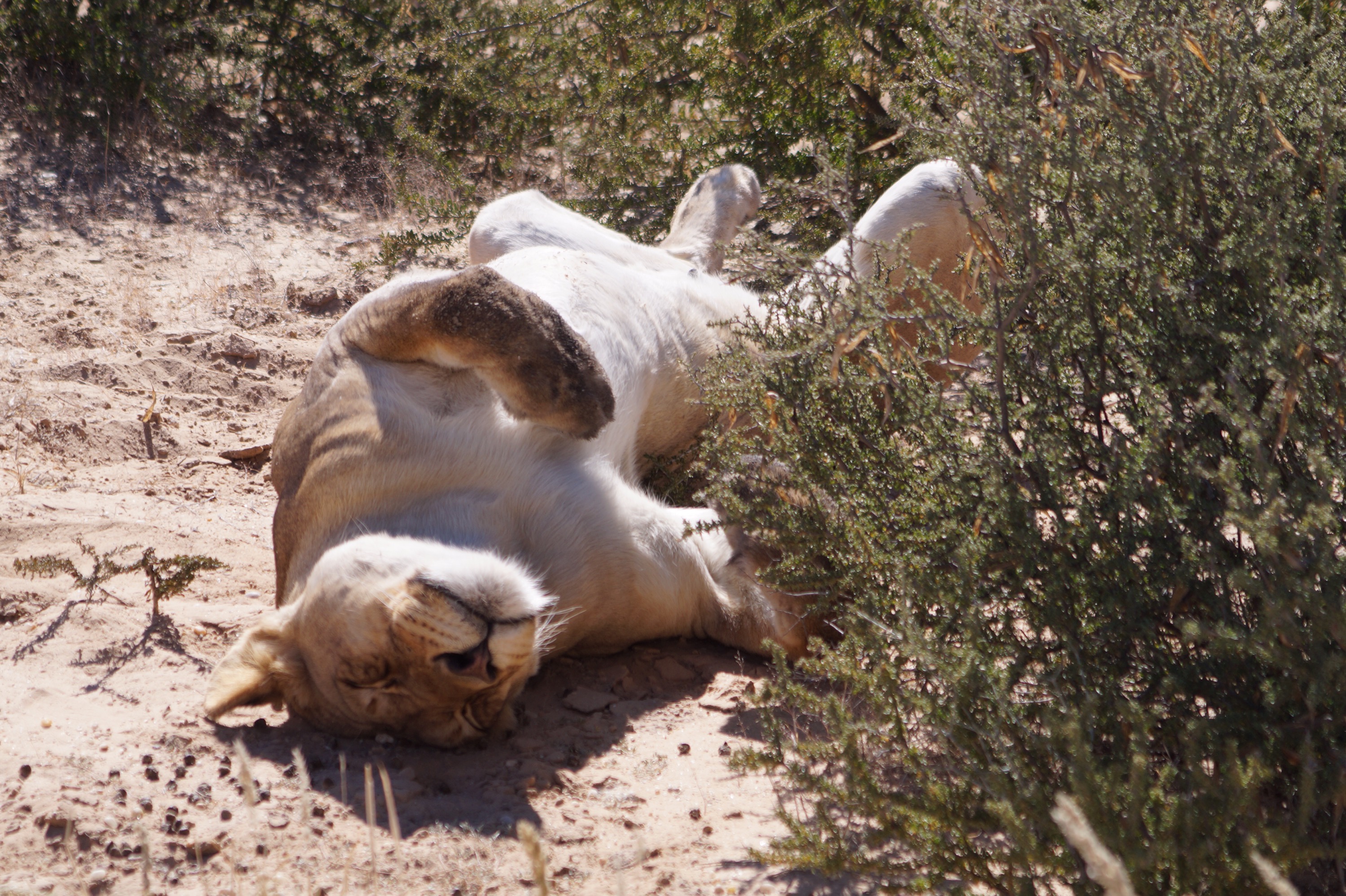
We have spent the last week in the Kgaligadi Trans-frontier park in the red sands of the Kalahari Desert. For some reason, almost certainly due to some colonial past, there is a little finger of South Africa that sticks up between the borders of Namibia and Botswana. The park spans both South Africa and Botswana, and the western side borders Namibia. Borders don't mean much out in the desert. We checked out of South Africa on the Monday but we didn't need to enter Namibia till a whole week later and we had to pass through Botswana to get to the main park road.
Full of lightly grassed red sand dunes, the park is bigger than Germany. The main two roads ran along two river beds, the rivers are subterranean so although you can't see any water there is enough moisture in the soil for some trees and bushes. Due to its arid climate, it doesn't support all the species found in Southern Africa but what it does have is cats, lots of cats. But saying that it isn't that easy to find them, the area is huge, we drove about 1000km over the seven days.
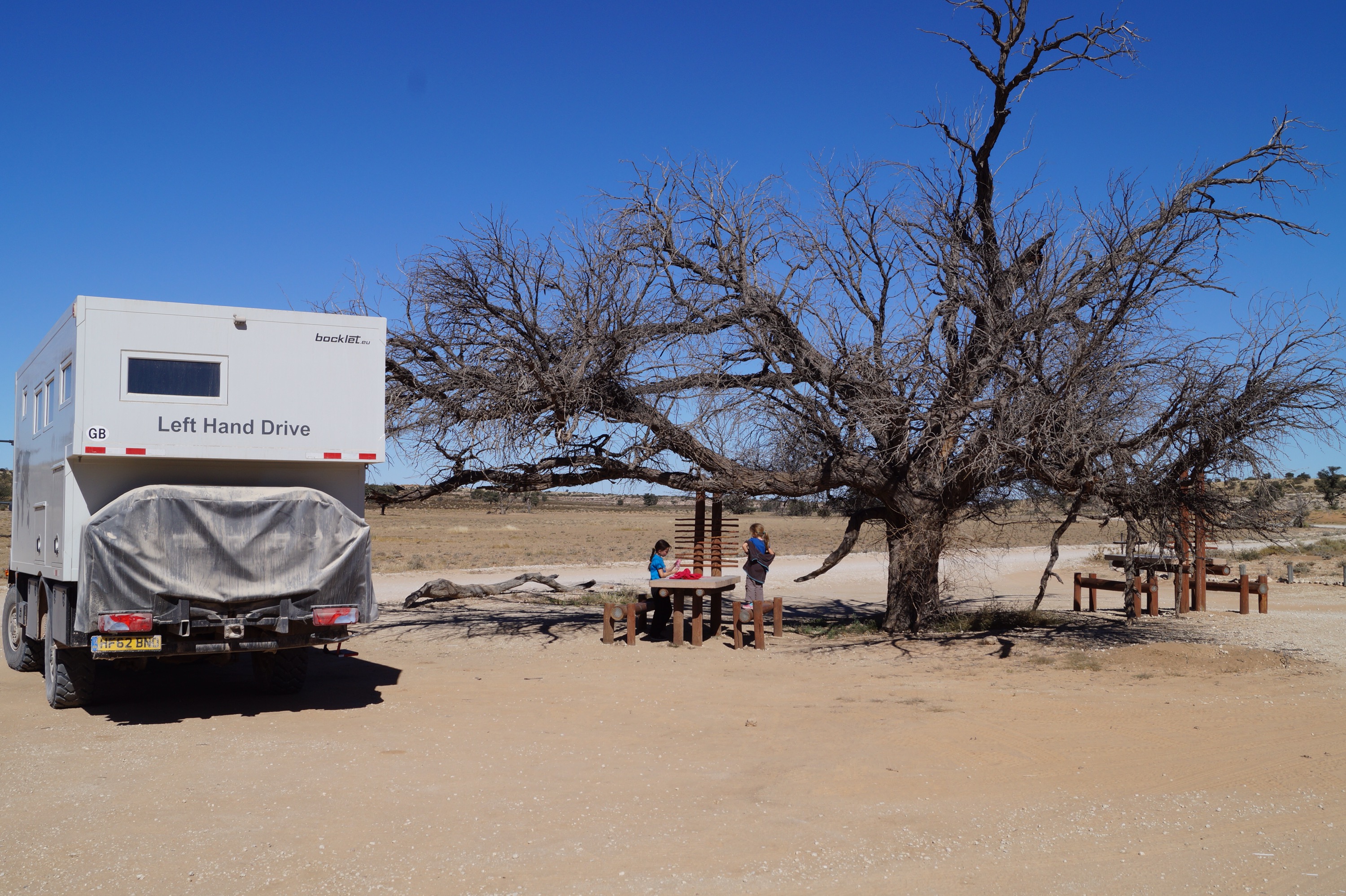
The South African part of the Kgaligadi Park is the most popular and has the easiest online booking. Due to its remote nature it seems to attract true nature and outdoor loving visitors, it's 3 campsites were full of the coolest 4wd off-road vehicles and trailers. As we couldn't book till last minute we ended up hopping between the different camps. At Nossob, the camp furthest North all we could book was a chalet for a night. Initially excited at the prospect, the girls decided in the end that they would prefer to sleep at "home", which was parked just outside and was far warmer.
Every morning started cold and clear as the temperature dropped to below zero every night. Heading out early we expected to find cats walking along the road, they like the soft sand on their paws, like we have in other places on safari. But in the desert in winter, it was far too cold for that, so instead we scanned the tops of dunes where they were slowly warming themselves as the sun rose higher. Sometimes it was just a hint of a head, paw or back could be seen in the distance but just occasionally we were rewarded with an amazing sighting.

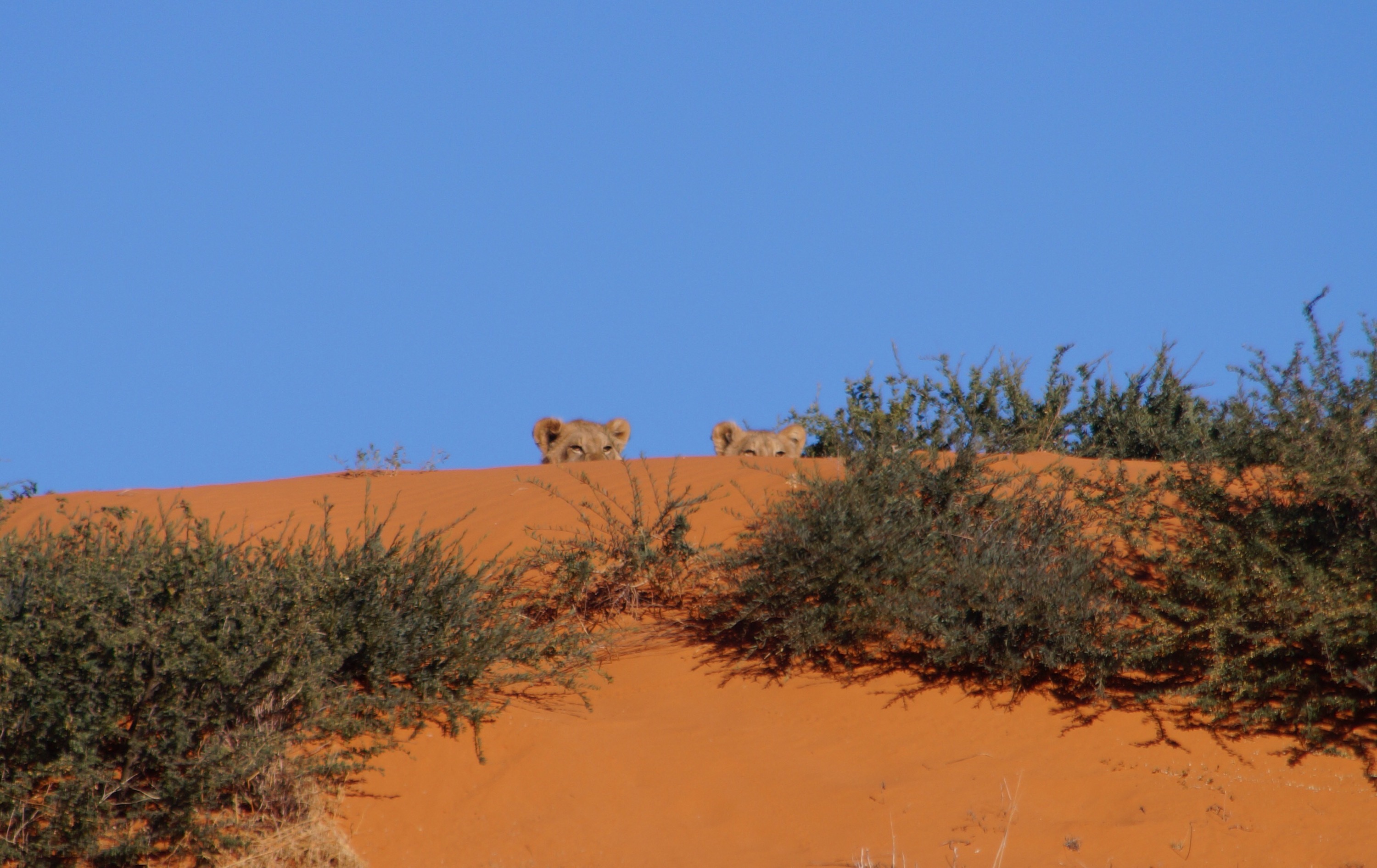
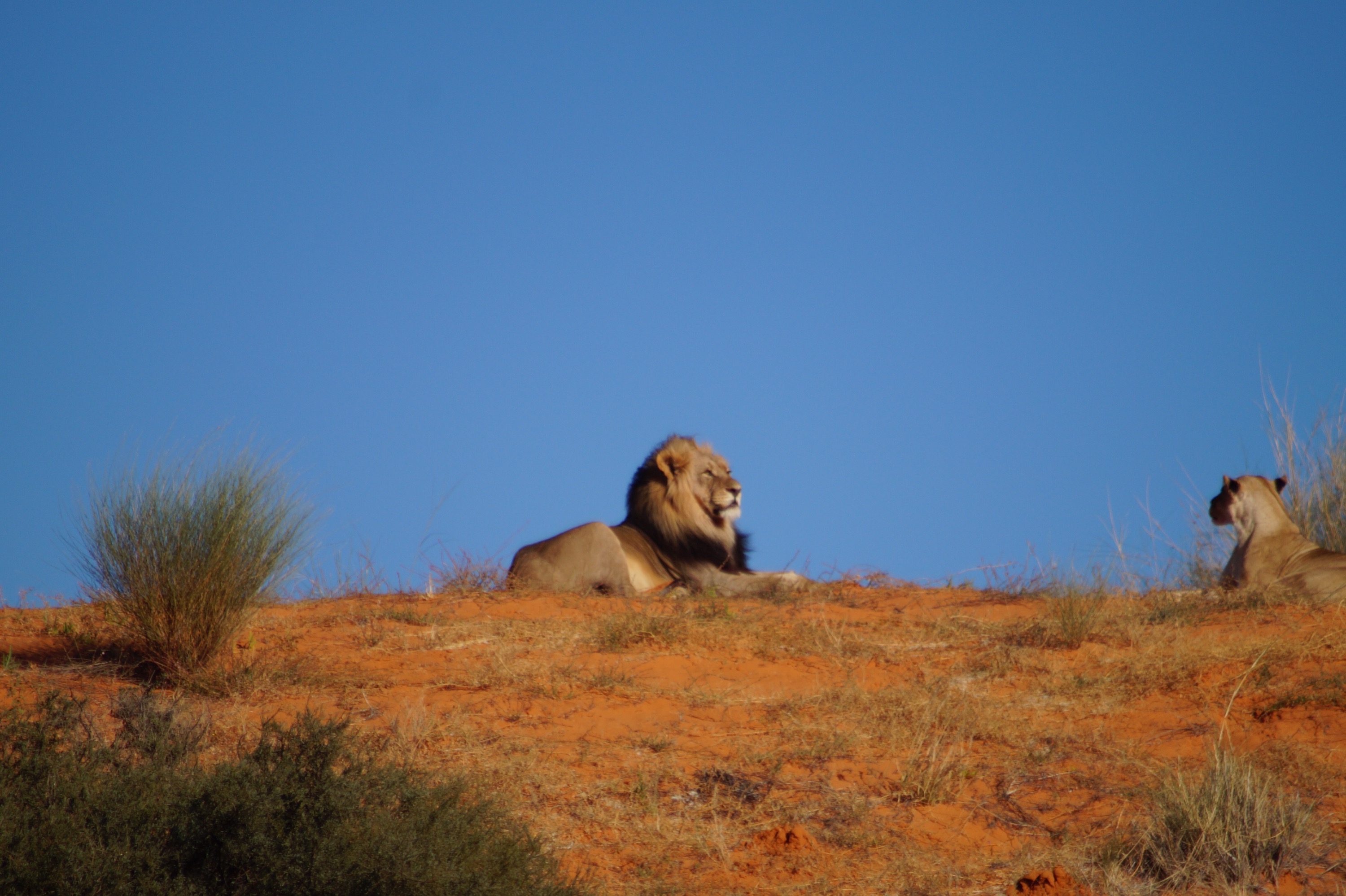
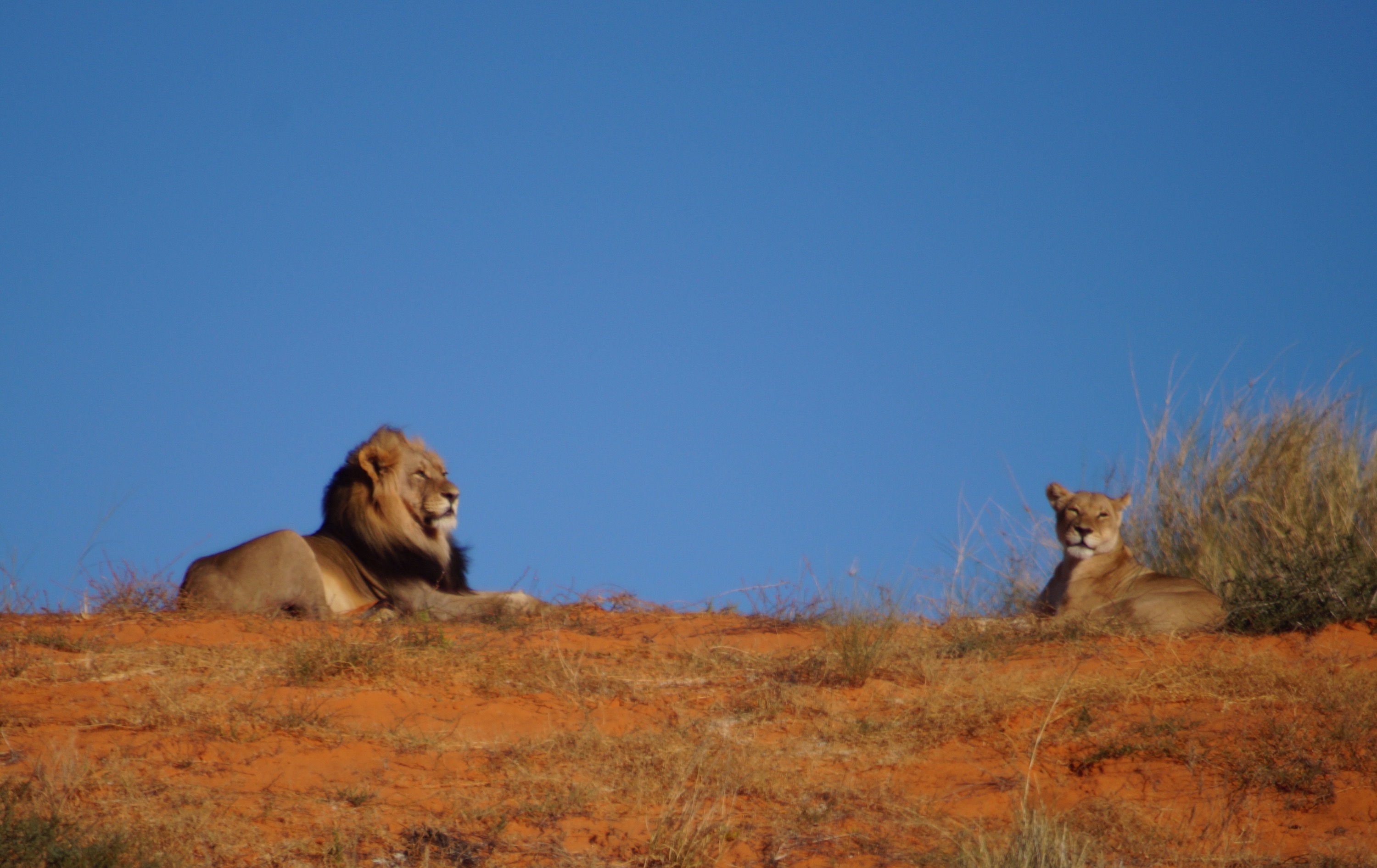
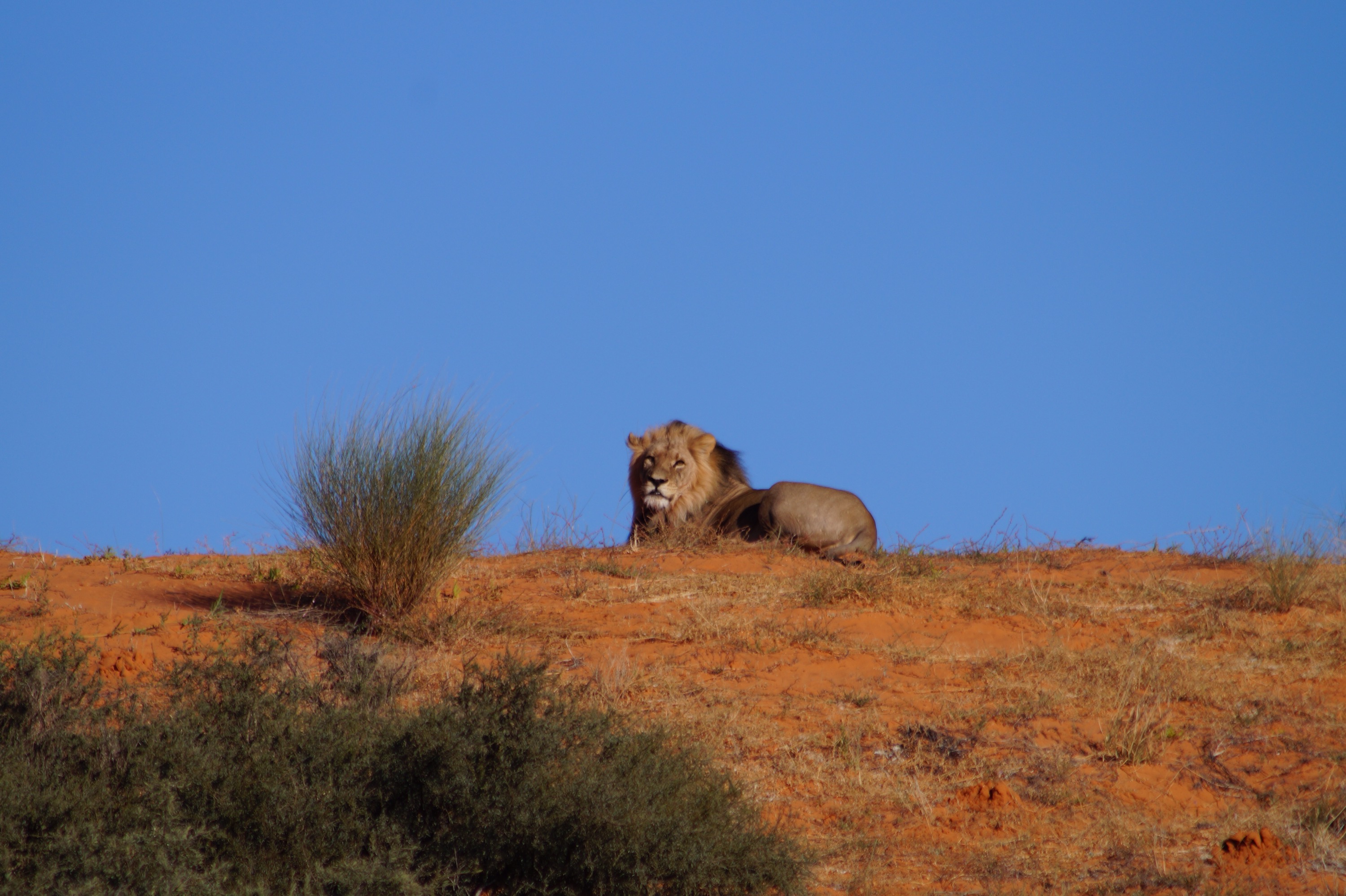
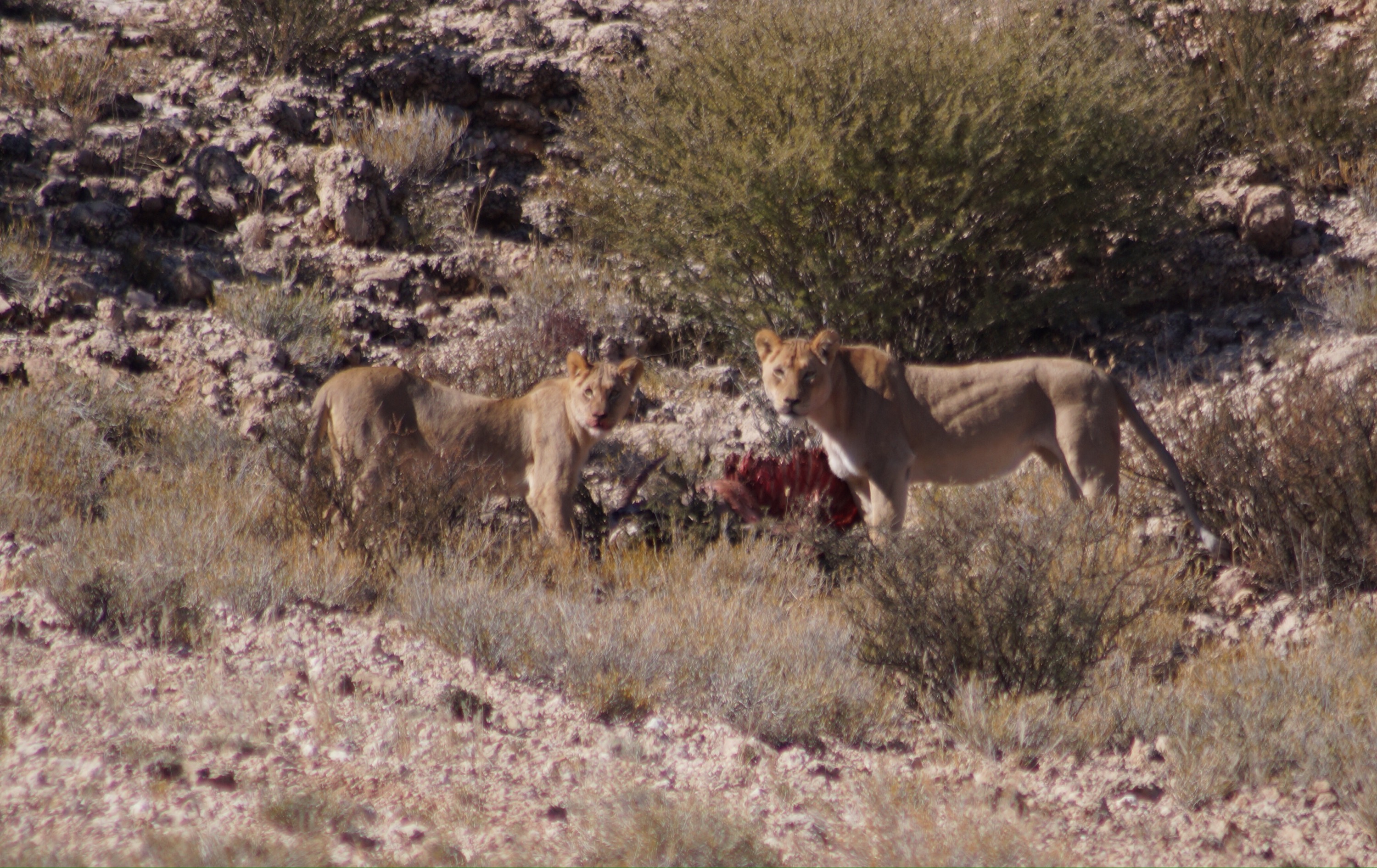
We spent every day driving, stopping for school in chunks, while we were watching at a waterhole or waiting to see if a distant cat would come closer. Leopards are notoriously difficult to spot in the day time but our patience paid off when a older shy female slowly made her way down to drink from a waterhole. We had spotted her an hour before high up in the dunes, the girls happily played a complicated game with their dolls on the cab floor, while we scanned with the binoculars. All games were forgotten as we watched her drinking, constantly scanning the horizon, she seemed completely oblivious to any vehicles though. We've found the game here very relaxed around cars, apart from the amorous lions of course.
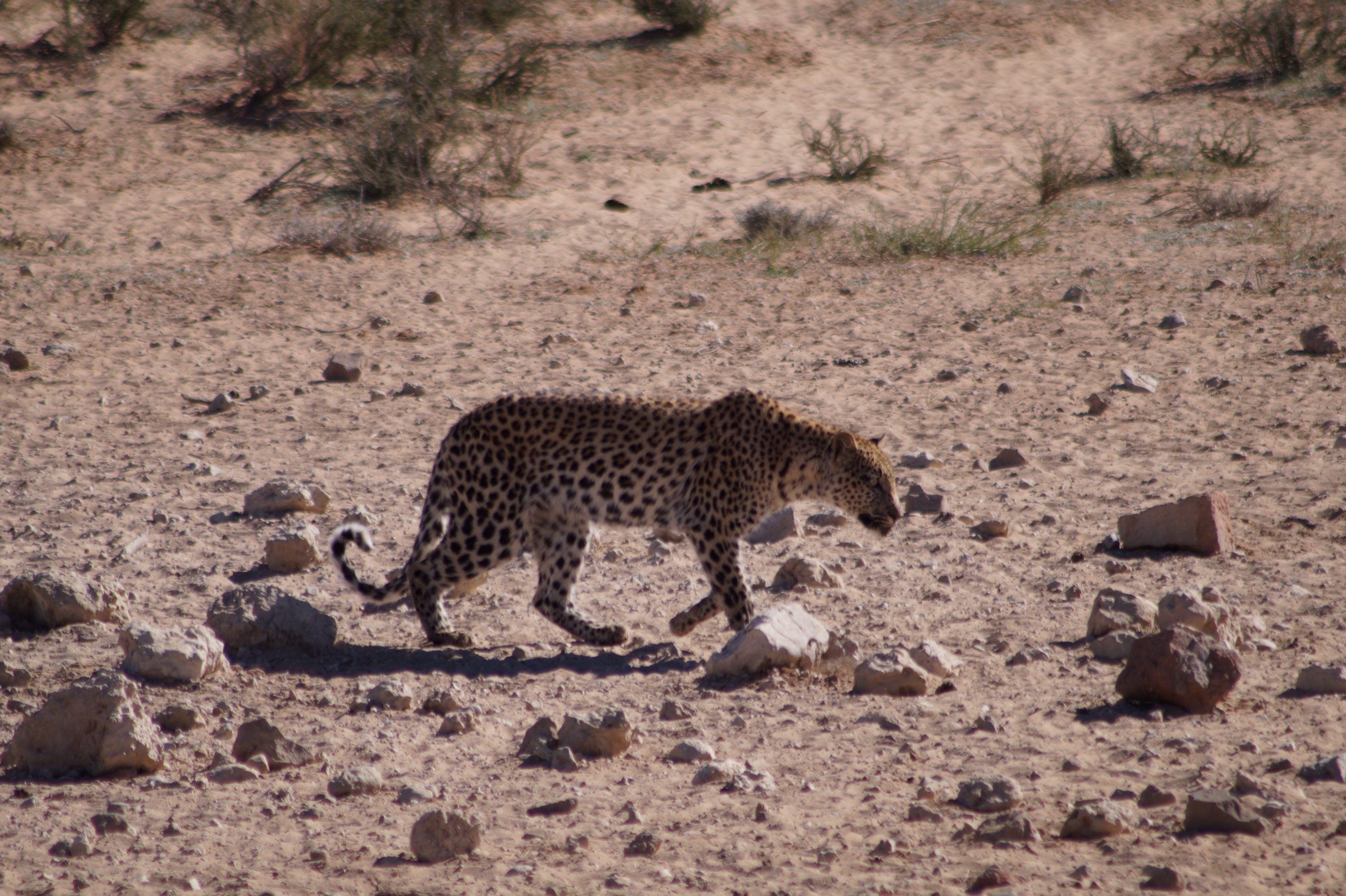

After a couple of unrewarding days we were thrilled on our last full day in the park to see a mother cheetah and her 4 almost grown cubs striding along the road. Watching them interacting together and looking for game was magical. After watching them disappear into the dunes, we continued along the road just a further kilometre to see 3 female lions walking straight towards us in the road. We could have almost touched them as they walked straight past the stationary truck.

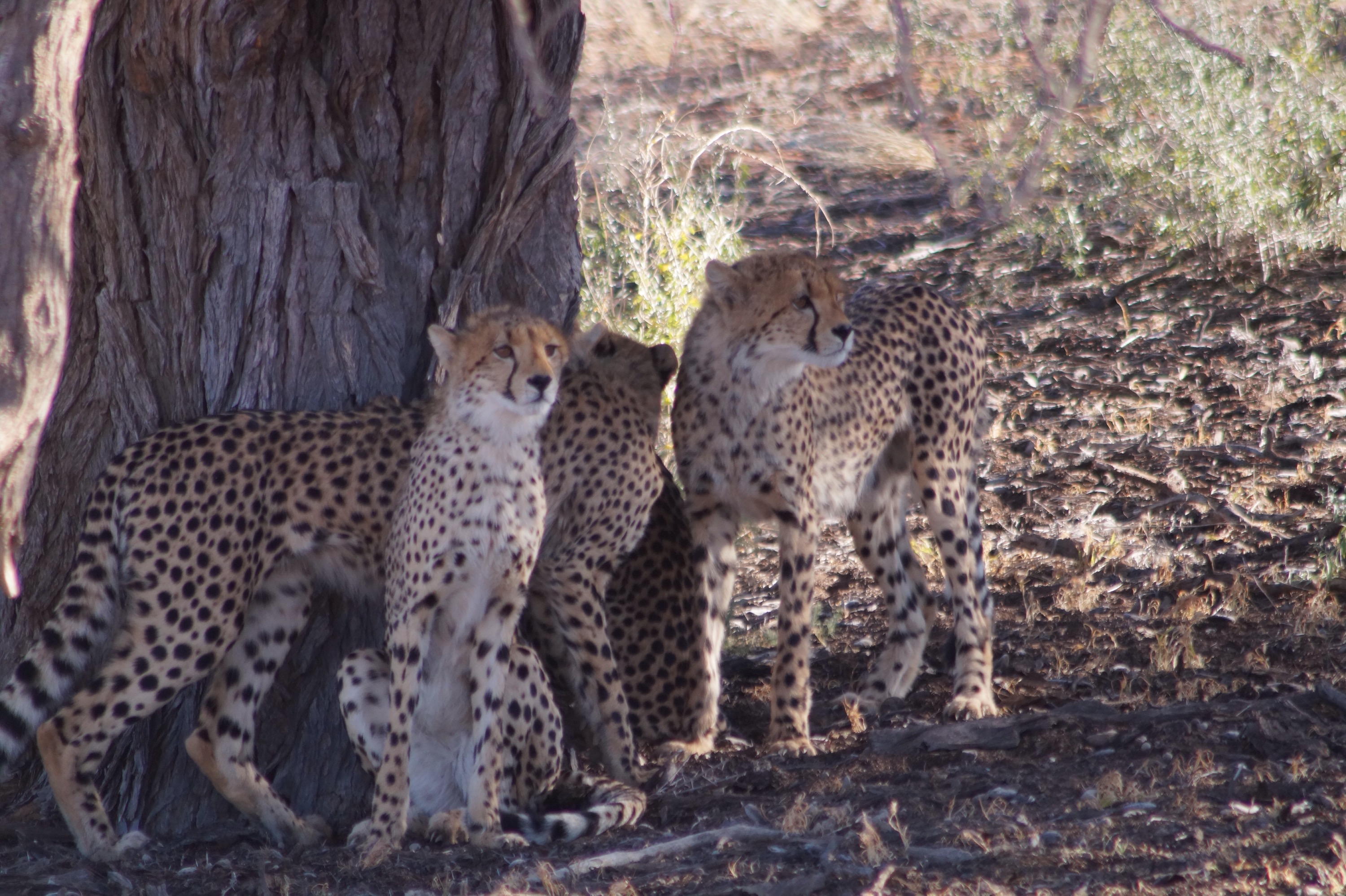
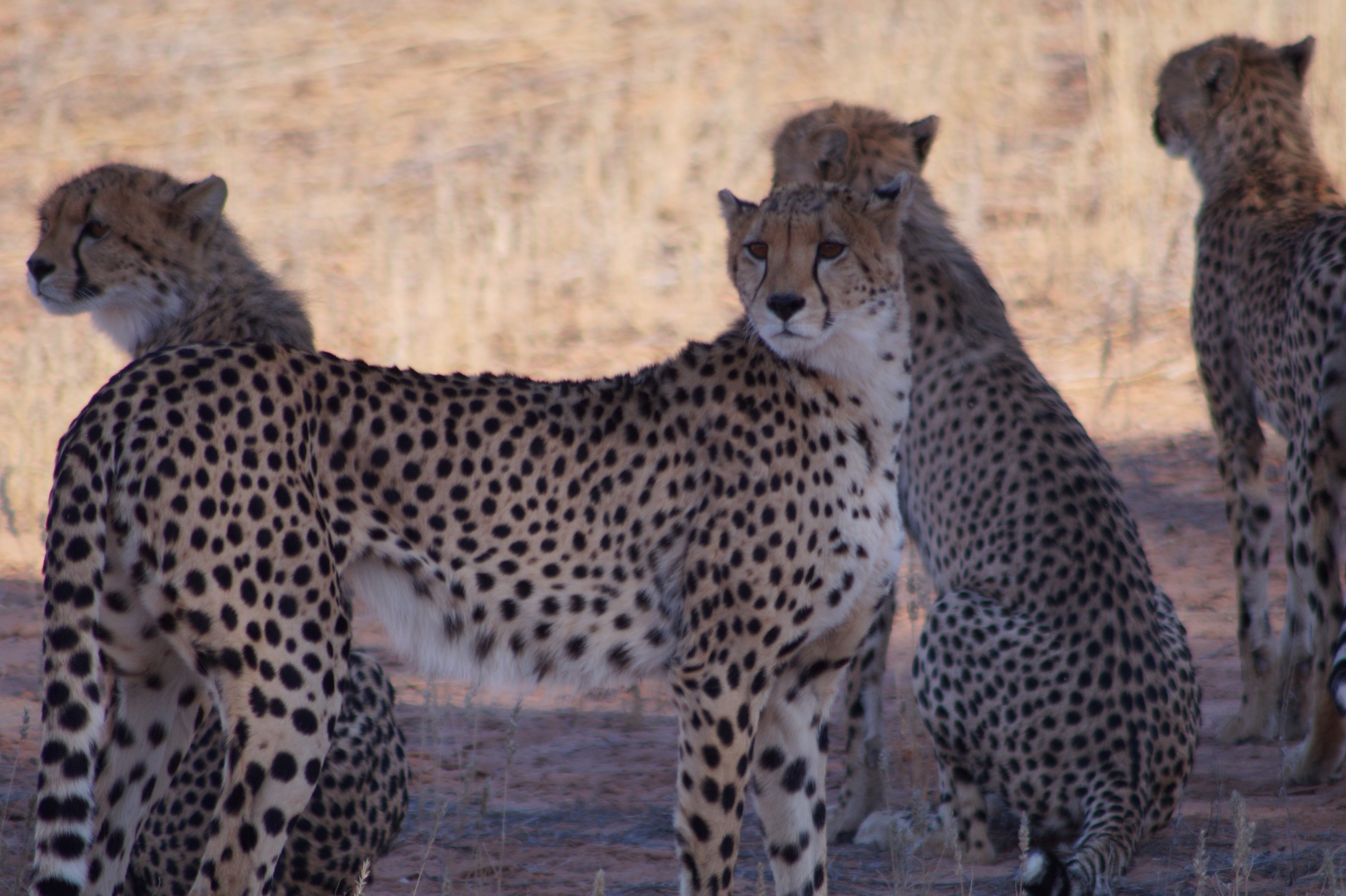
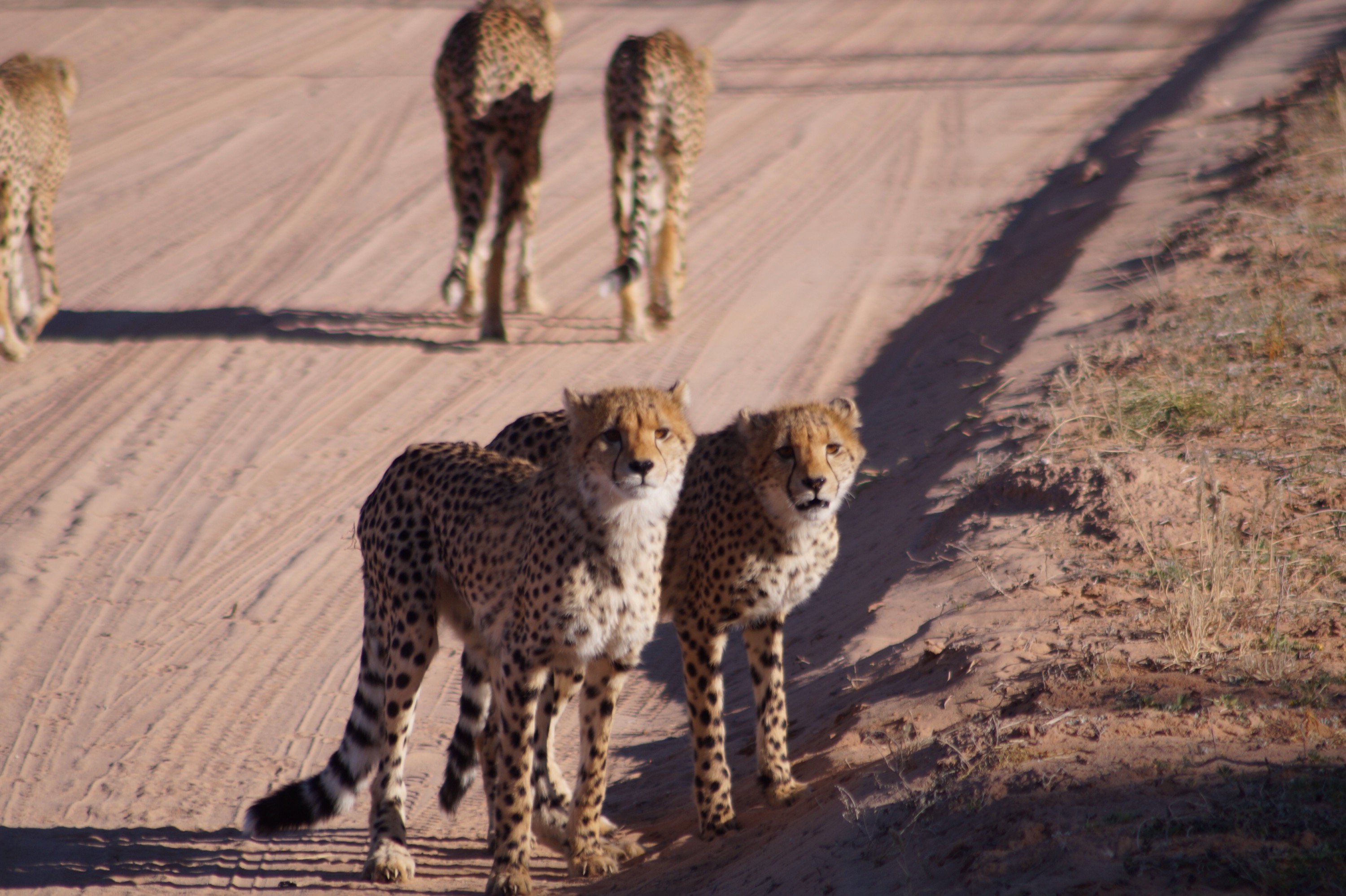
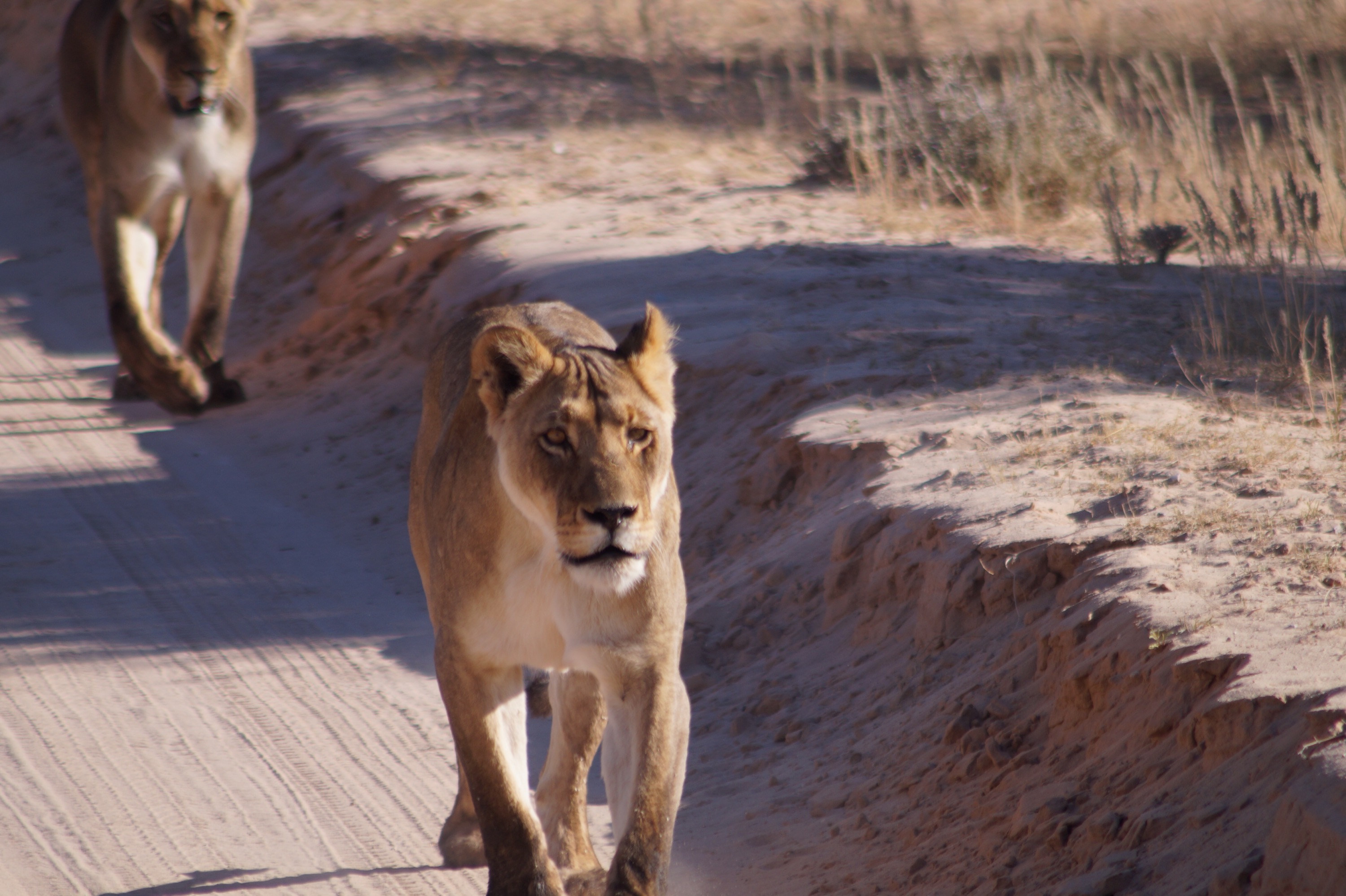
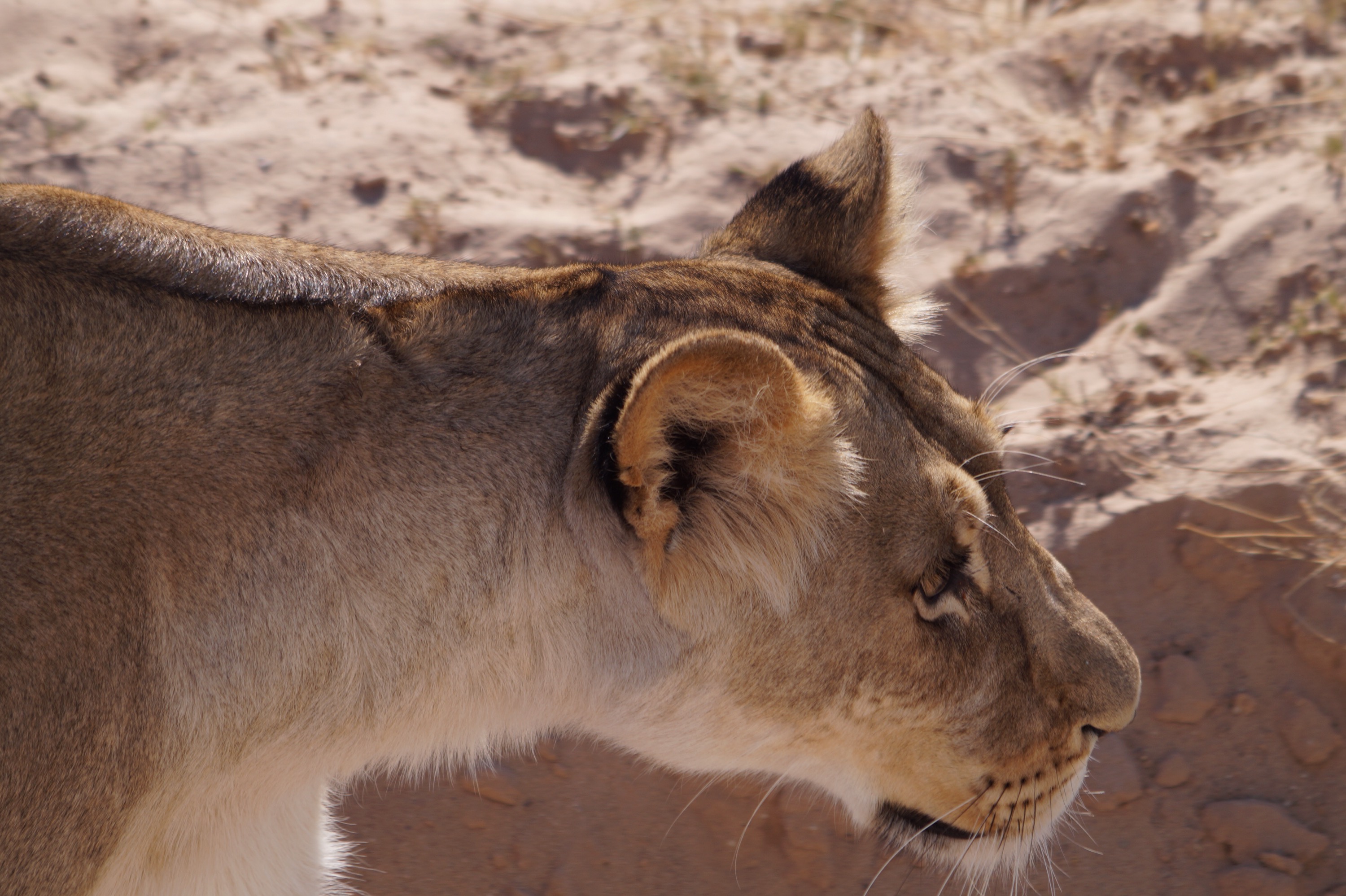 The park also has some of the true desert animals like the regal looking gemsbok (oryx), bat eared foxes and springbok. The girls couldn't believe how far the springbok could jump straight off the ground from standing when they pronked, a response to danger. Watching the meerkats and their very human like stance, delighted them too.
The park also has some of the true desert animals like the regal looking gemsbok (oryx), bat eared foxes and springbok. The girls couldn't believe how far the springbok could jump straight off the ground from standing when they pronked, a response to danger. Watching the meerkats and their very human like stance, delighted them too.

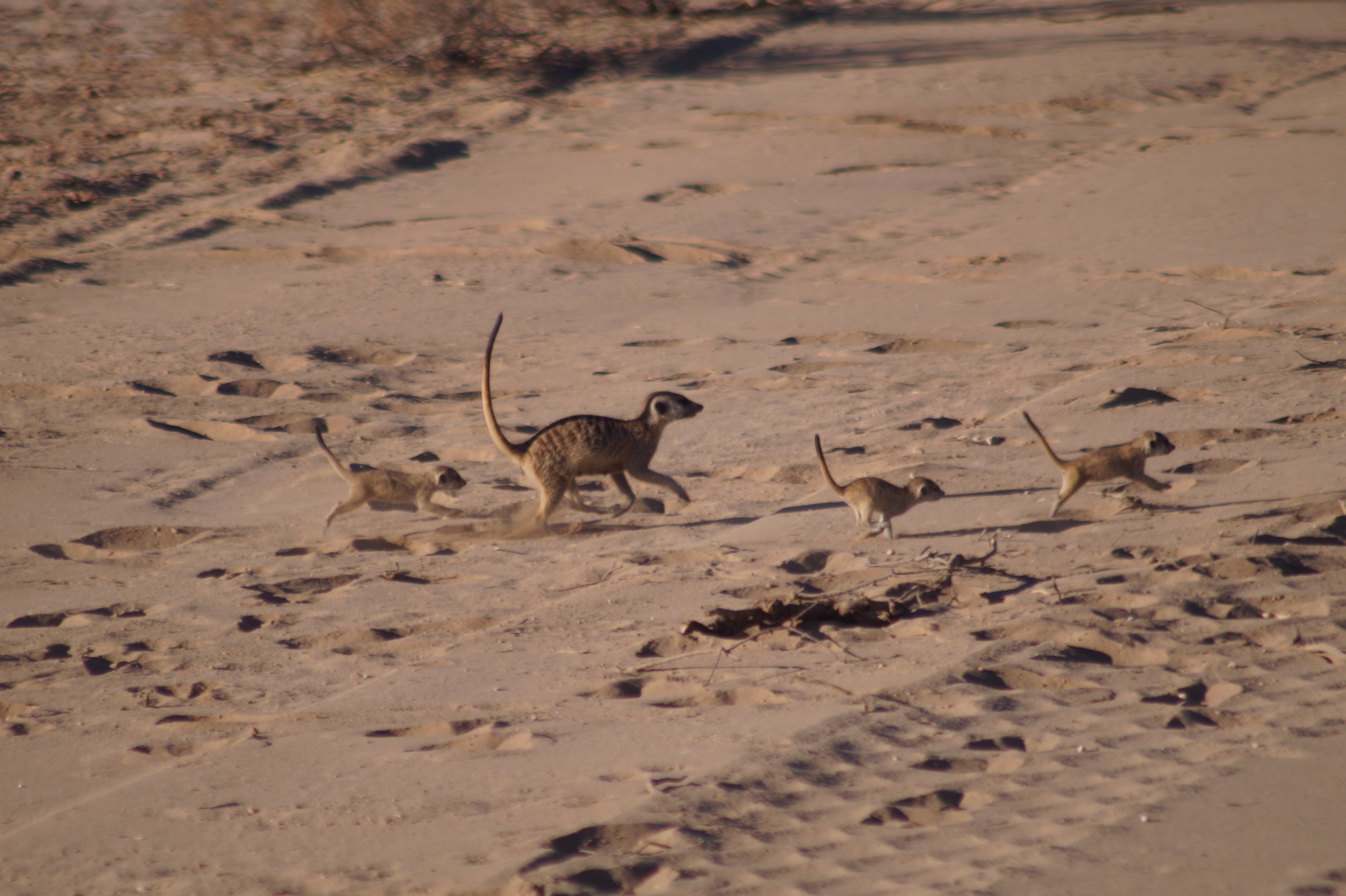
Although the main campsites are fully fenced it was the wildlife inside the fence that delighted us. Hornbills, crimson-breasted shrikes, lilac breasted rollers and lots of other birds perched in the shade trees. The huge collective nests of the sociable weaver astounded us. Whilst on the ground the foxy faced slender mongooses and bushy tailed ground squirrels were so used to humans that they went about their foraging as usual, much to our fascination. On our last night the smell of all the braais (barbecues) bought a large spotted hyena right up to the fence, just metres from the truck.
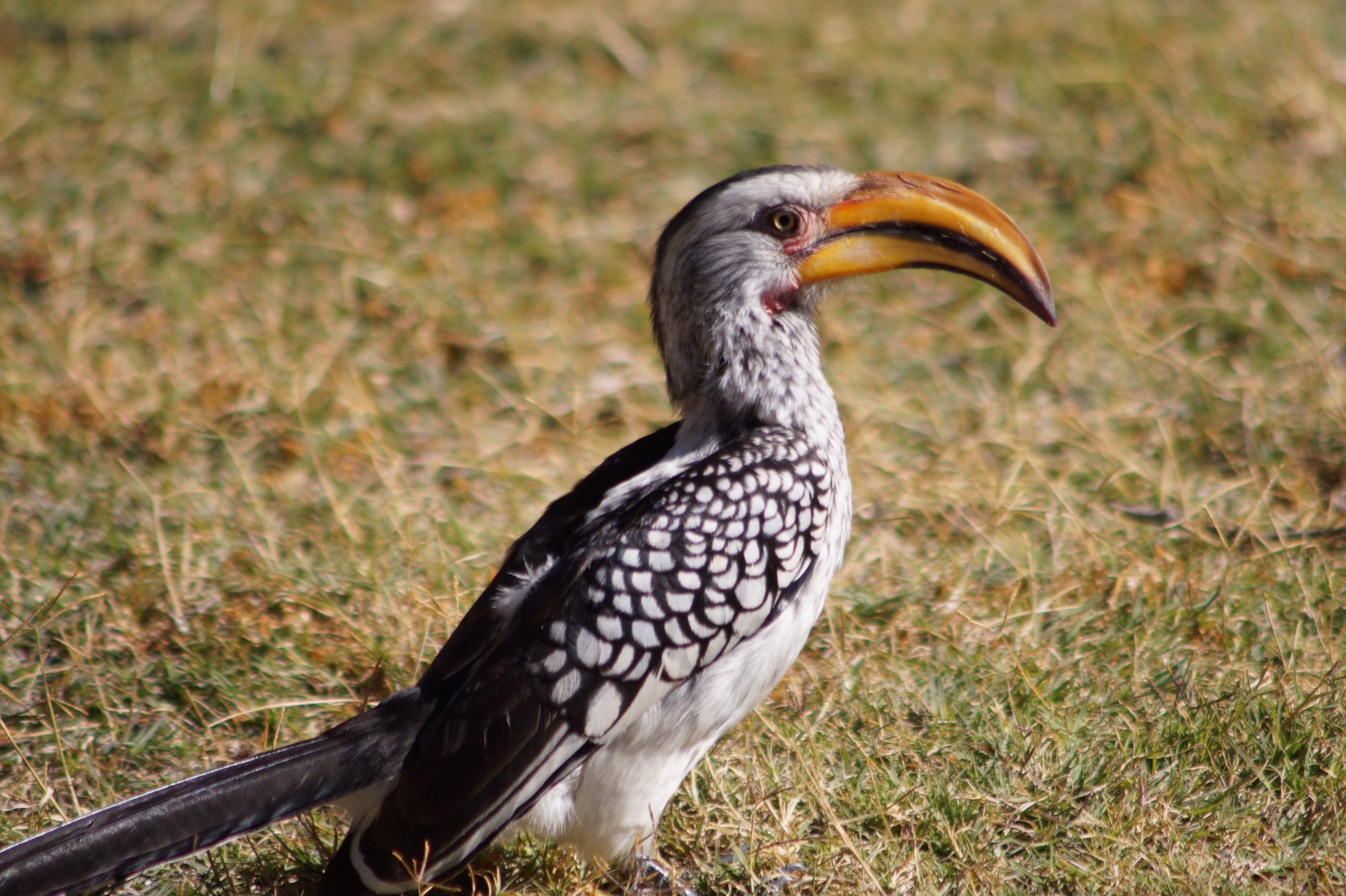

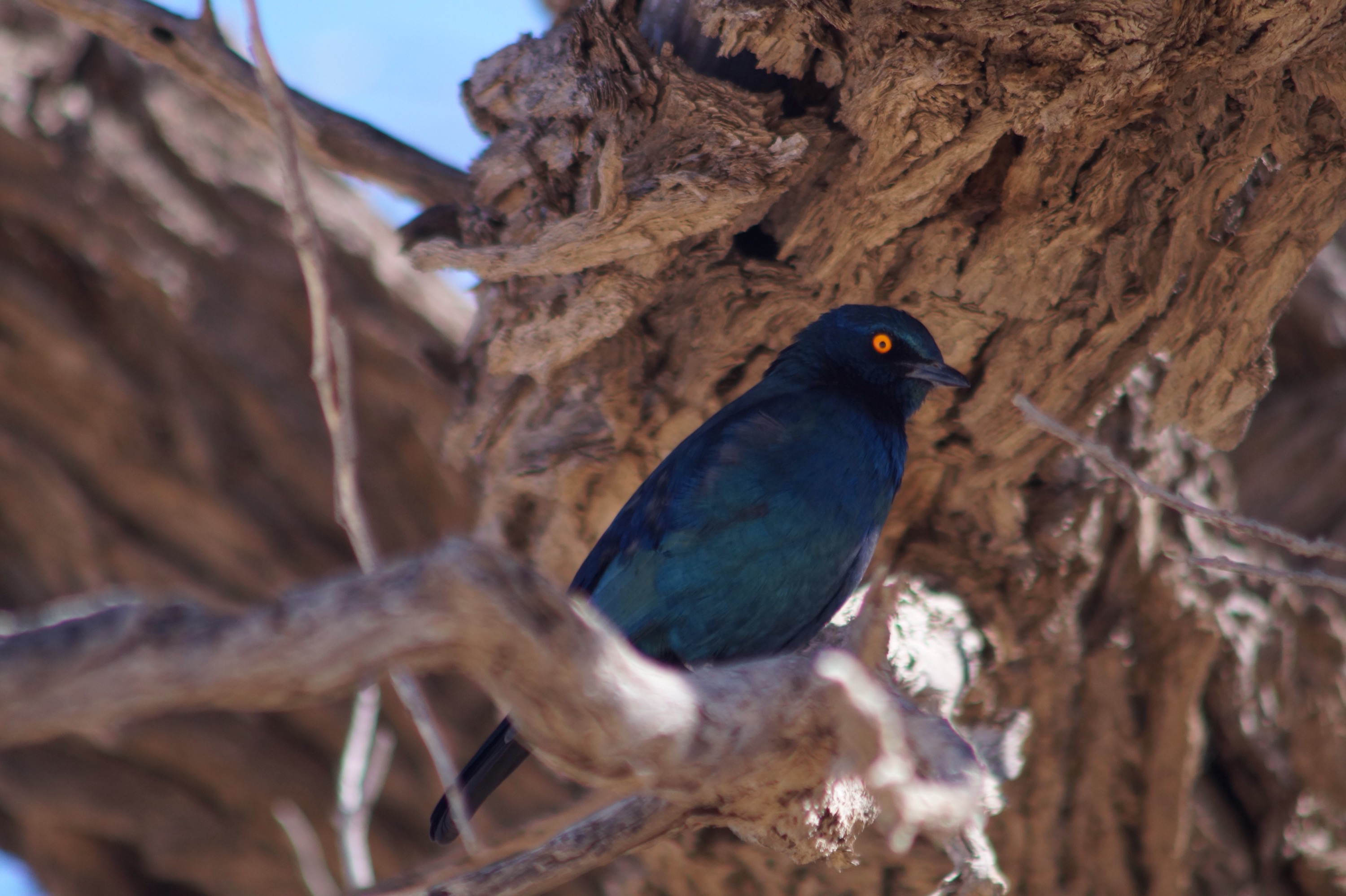
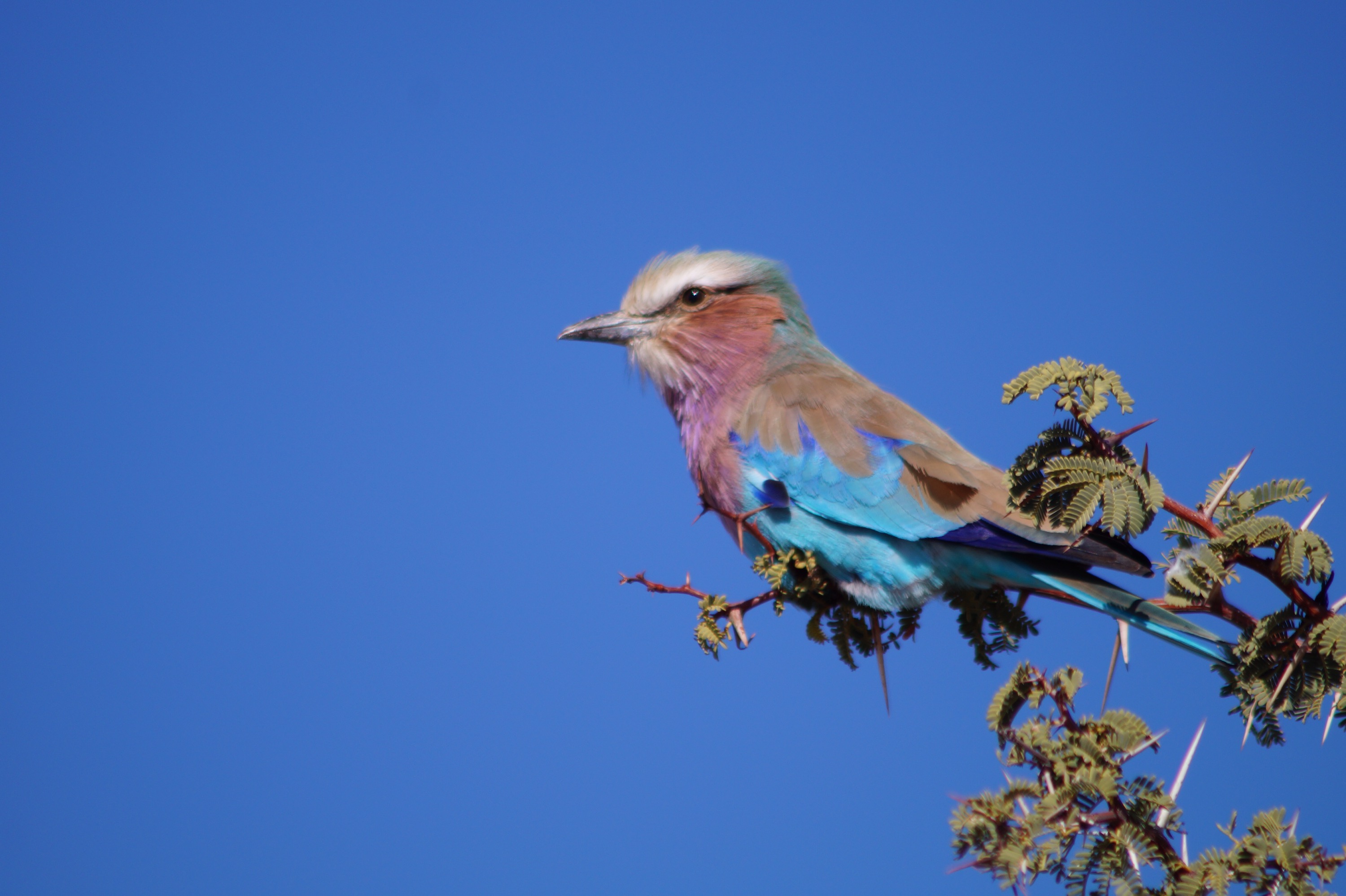
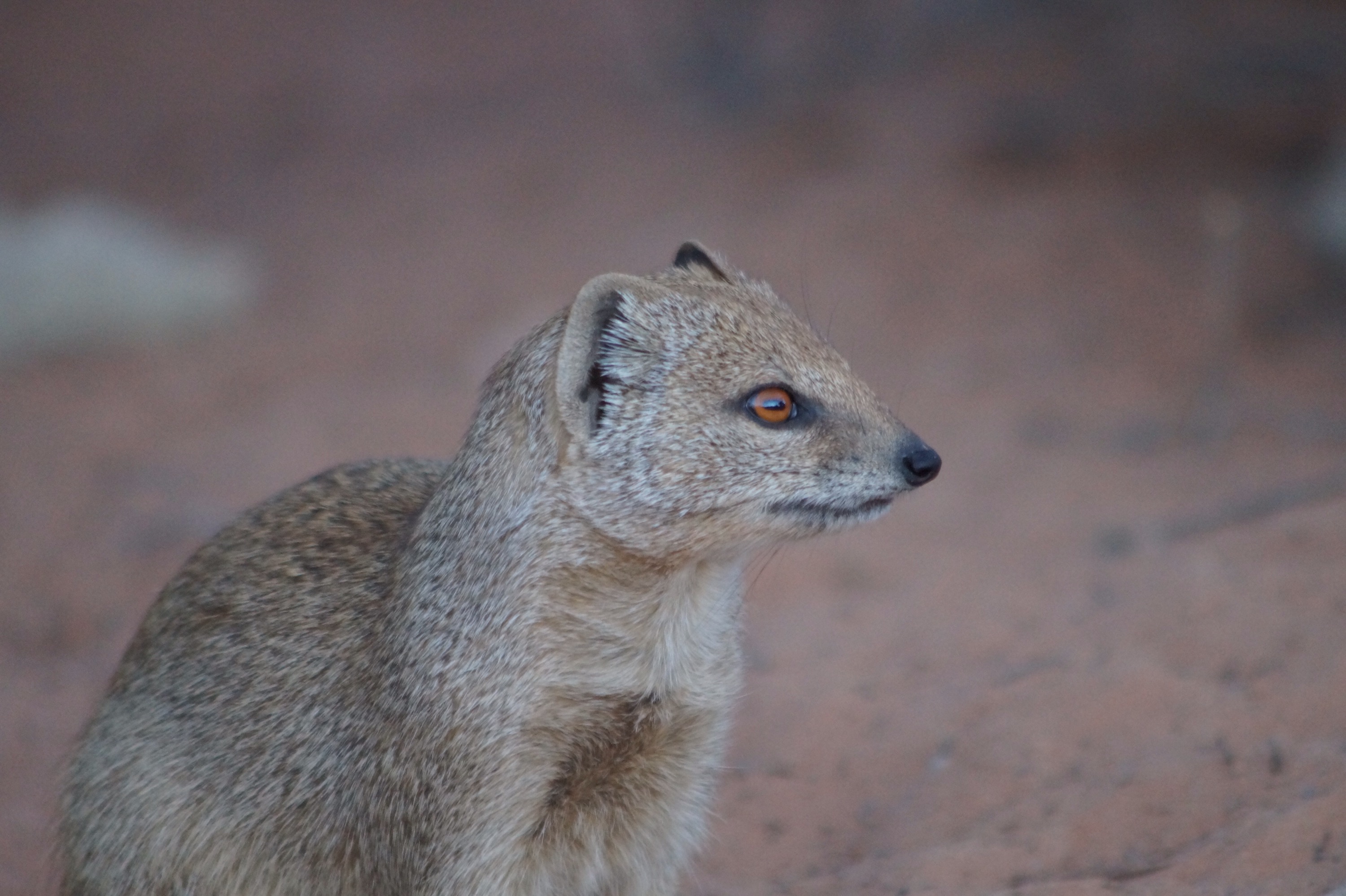
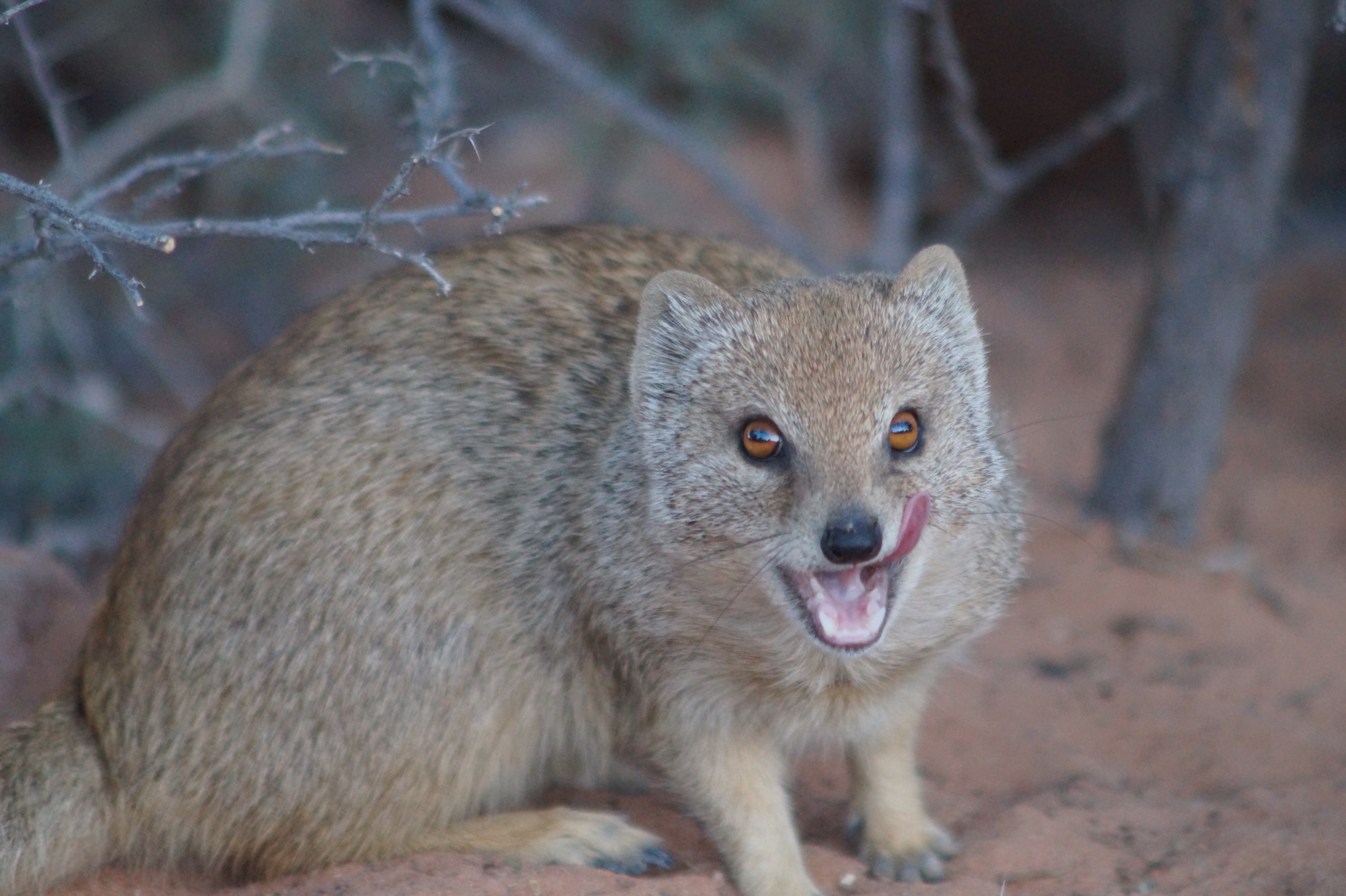

After a week we were very sad to leave, we all love wildlife so all the game viewing had been magnificent. But it was also the magic of the rolling red dunes, sense of space and the blinding blue endless skies above that captivated our hearts.
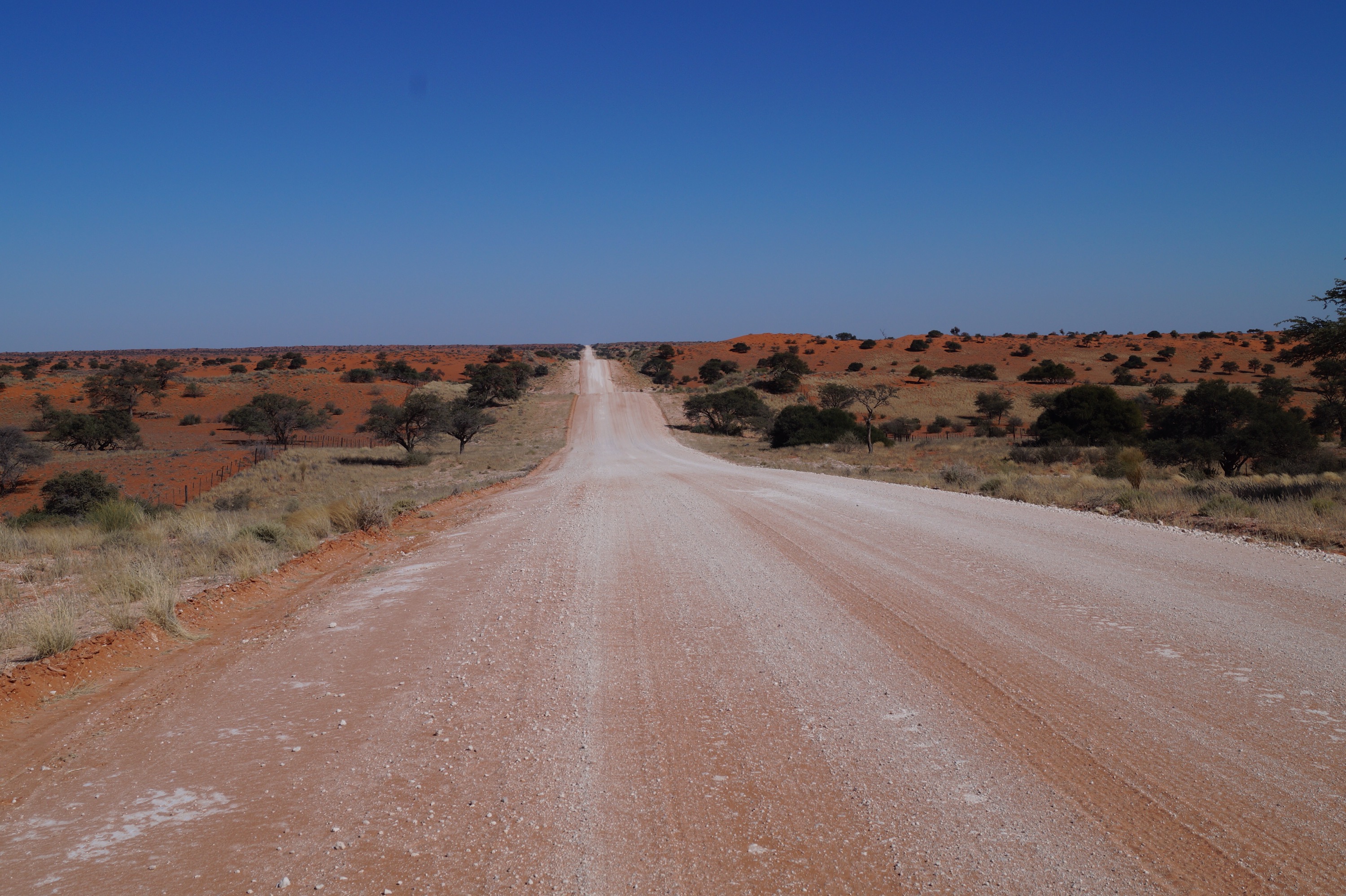 Our first stop in Namibia was at a farm famous for having a large grove of Quivertrees. These hardy trees are found throughout the desert but it is rare for them to be seen together in such numbers. They were very photogenic in the early evening sun. I say early, as the clocks went back when we entered Namibia and with it been winter here it is now dark by 5.30pm, although it is light by 6am so it means getting up early and going to bed early as the locals do. Very different to South America.
Our first stop in Namibia was at a farm famous for having a large grove of Quivertrees. These hardy trees are found throughout the desert but it is rare for them to be seen together in such numbers. They were very photogenic in the early evening sun. I say early, as the clocks went back when we entered Namibia and with it been winter here it is now dark by 5.30pm, although it is light by 6am so it means getting up early and going to bed early as the locals do. Very different to South America.

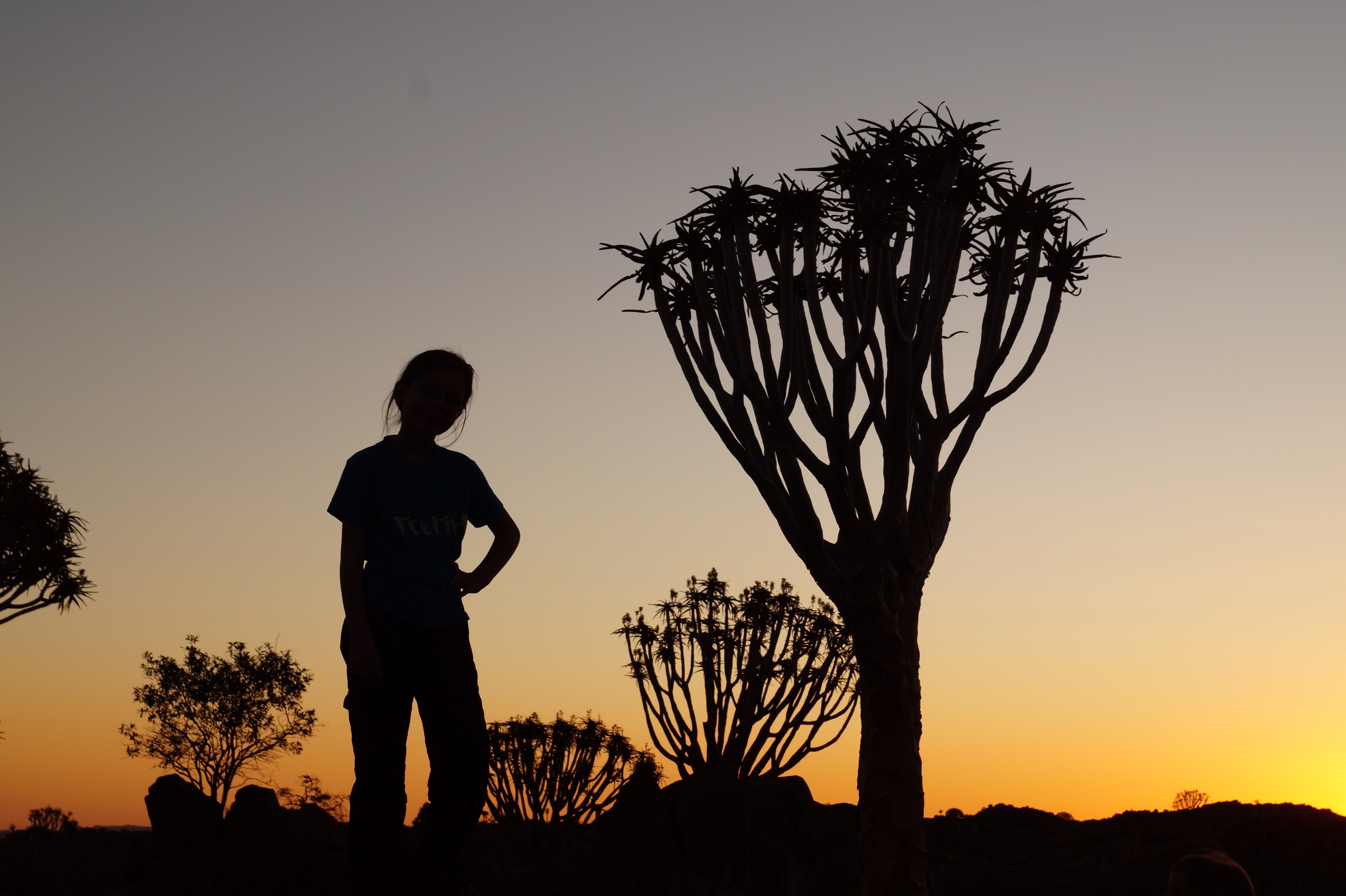
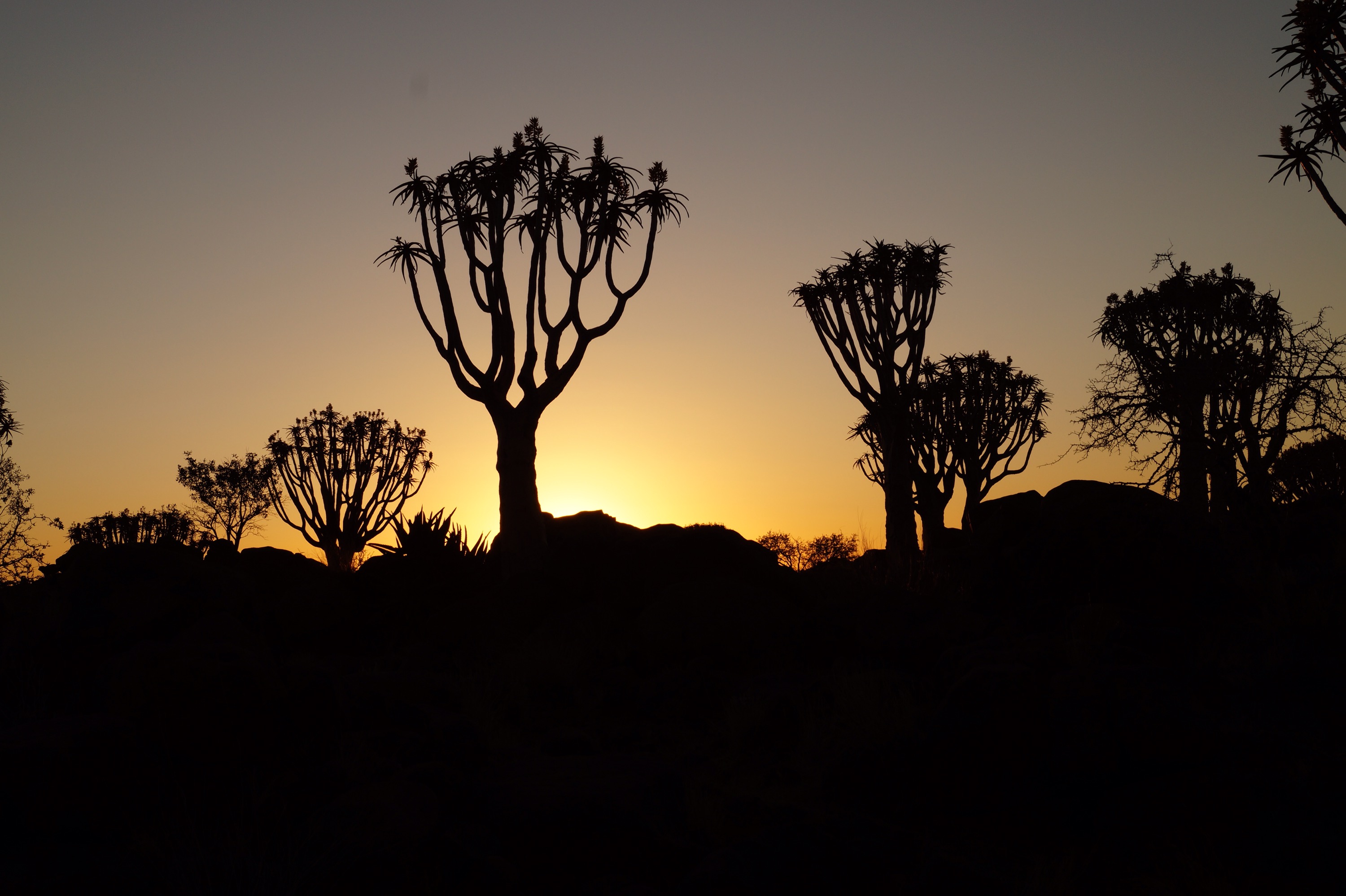
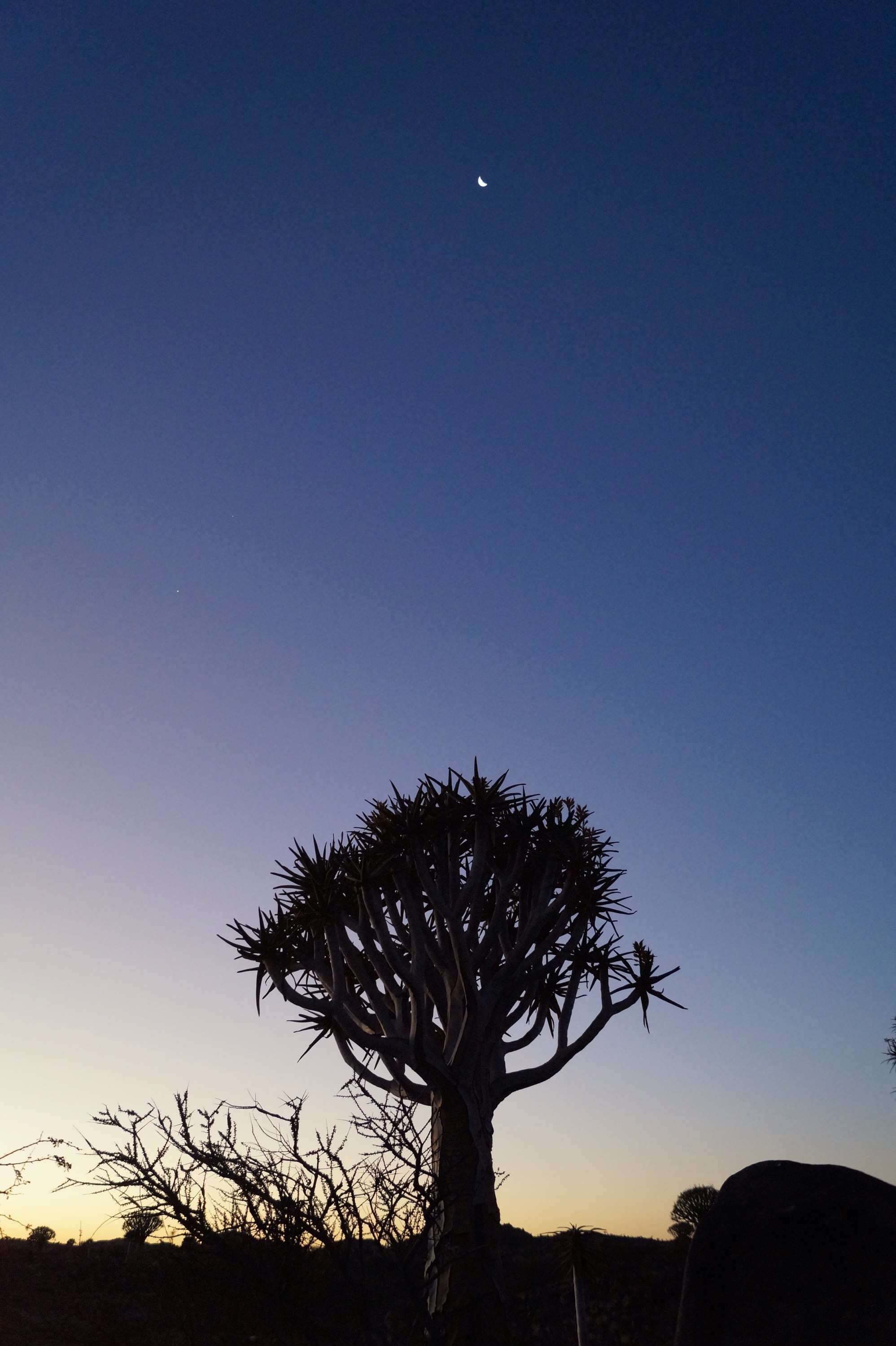 The farm that we stayed on also had 4 cheetahs in large enclosures. They had raised these cheetahs from cubs. Each evening they fed them and this allowed you to see them close up. In fact for Gilly and I, very close up as we were able to go into the enclosure with them. The children were not allowed to go in due to their size which meant the cheetah could still see them as prey, so they were not fully tame. We much prefer seeing the animals in the wild though even if it is not so close as this felt a bit canned. Still it did mean we could take some close up photos.
The farm that we stayed on also had 4 cheetahs in large enclosures. They had raised these cheetahs from cubs. Each evening they fed them and this allowed you to see them close up. In fact for Gilly and I, very close up as we were able to go into the enclosure with them. The children were not allowed to go in due to their size which meant the cheetah could still see them as prey, so they were not fully tame. We much prefer seeing the animals in the wild though even if it is not so close as this felt a bit canned. Still it did mean we could take some close up photos.
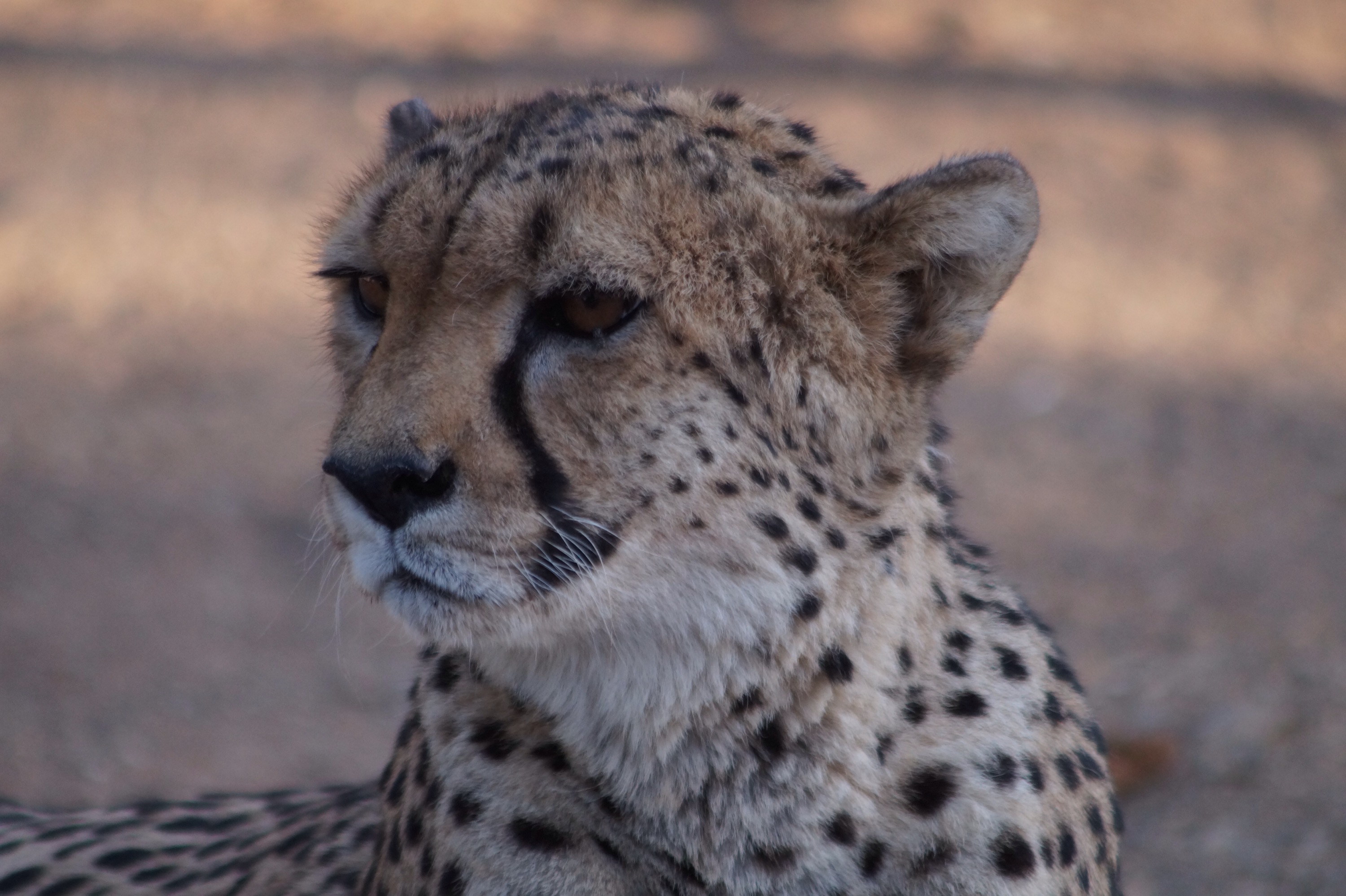
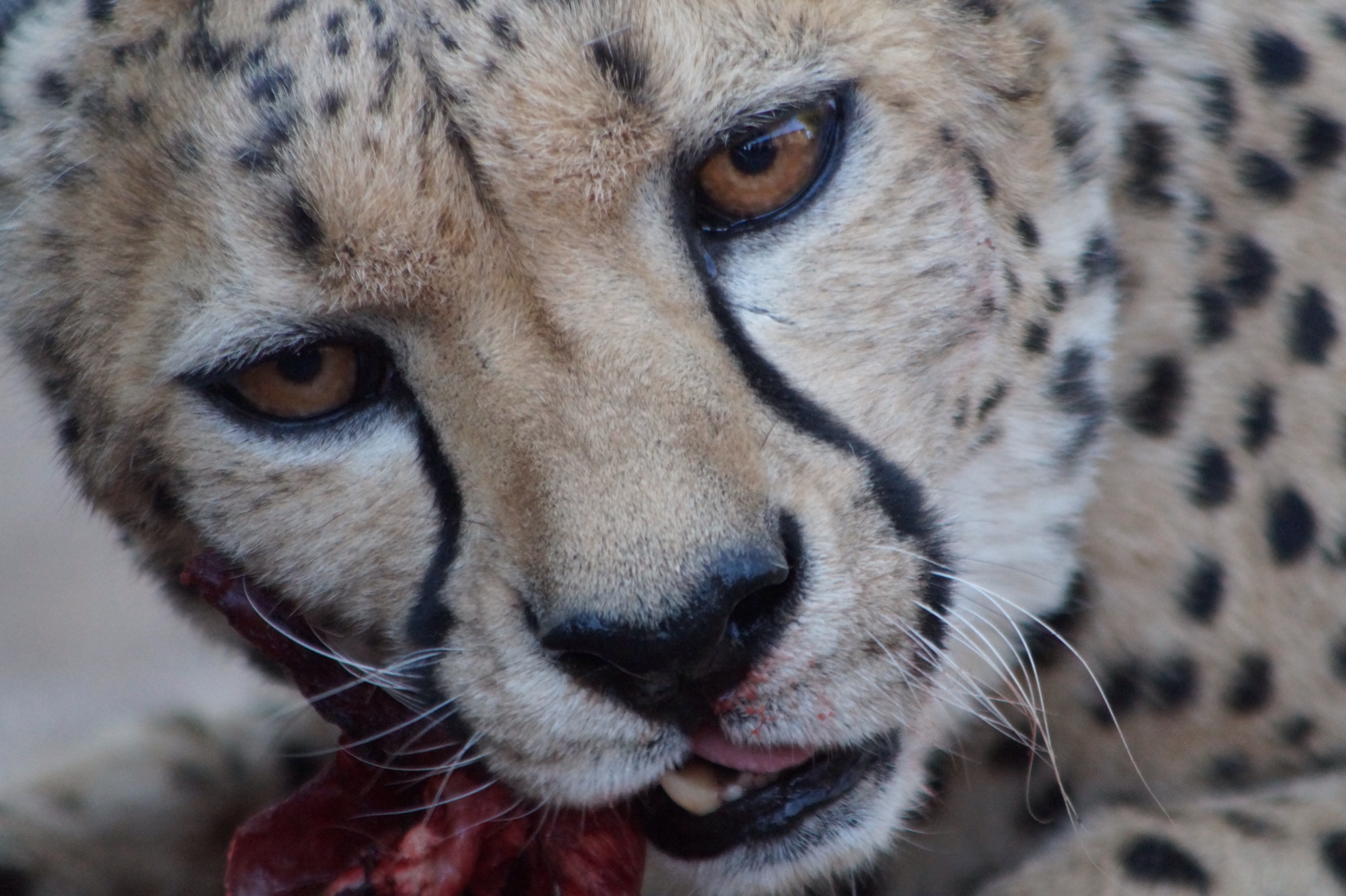 We left the Quivertree forest and headed south to what is claimed to be the second largest canyon in the world, the Fish River Canyon. Whilst I can not testify to the accuracy of the claim it is a deep canyon and we had fantastic views down into it. Gilly and I have visited Namibia twice before and when we last visited Fish River Canyon 18 years ago we hiked to the bottom and back. Day trips down into the canyon are now prohibited which is probably a good thing for me as I am not sure being 18 years older it would be quite so easy.
We left the Quivertree forest and headed south to what is claimed to be the second largest canyon in the world, the Fish River Canyon. Whilst I can not testify to the accuracy of the claim it is a deep canyon and we had fantastic views down into it. Gilly and I have visited Namibia twice before and when we last visited Fish River Canyon 18 years ago we hiked to the bottom and back. Day trips down into the canyon are now prohibited which is probably a good thing for me as I am not sure being 18 years older it would be quite so easy.
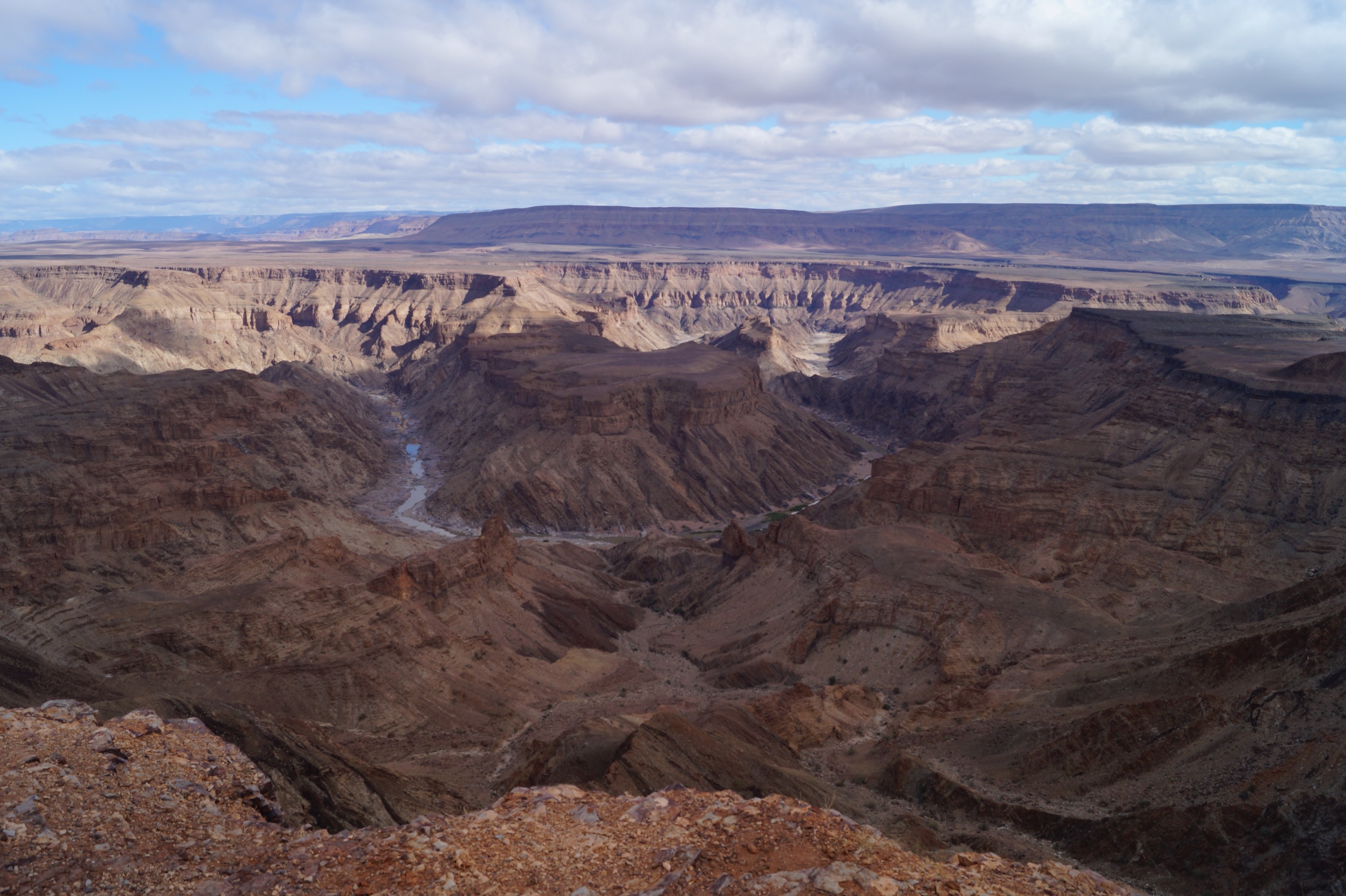
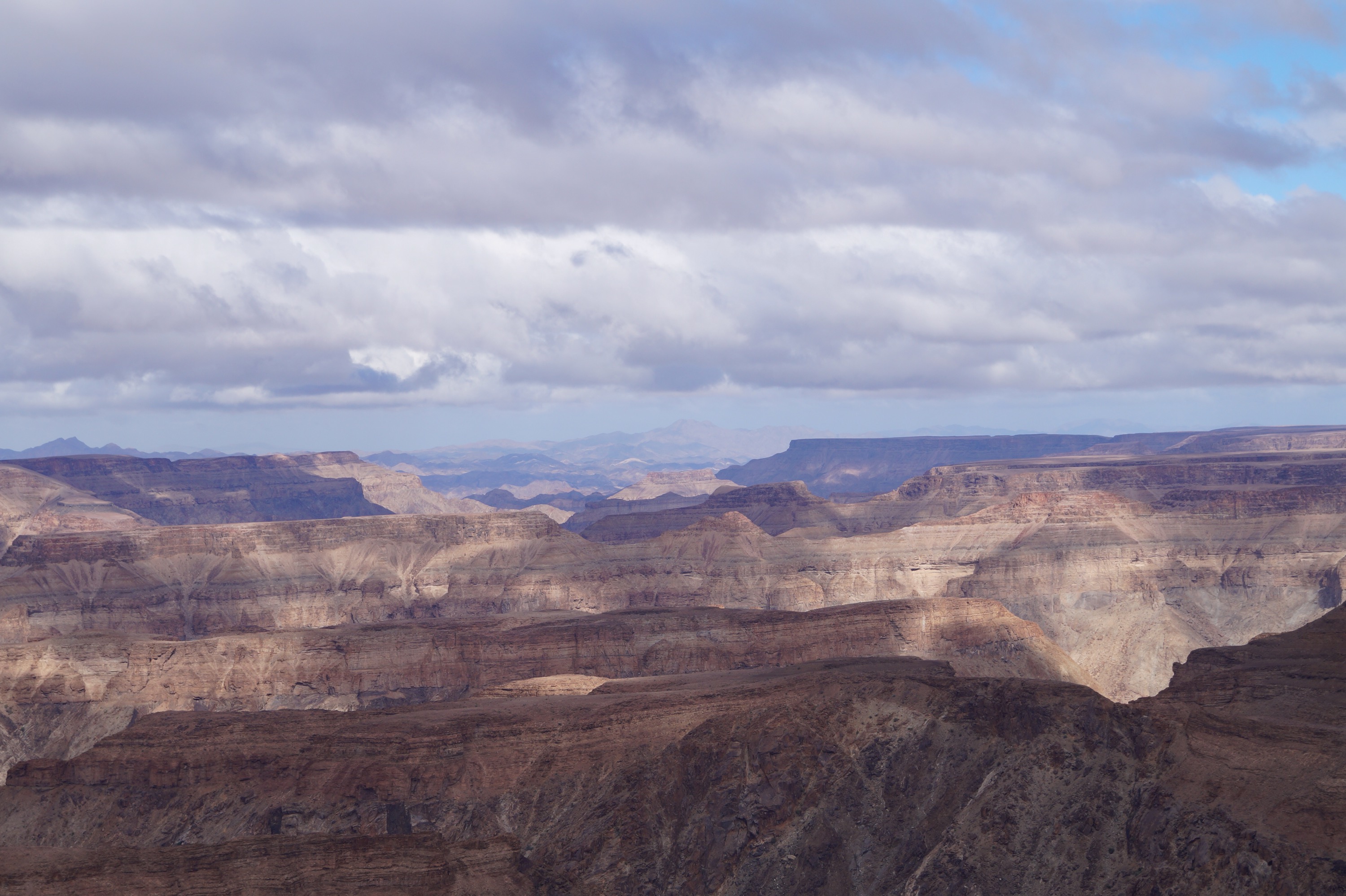
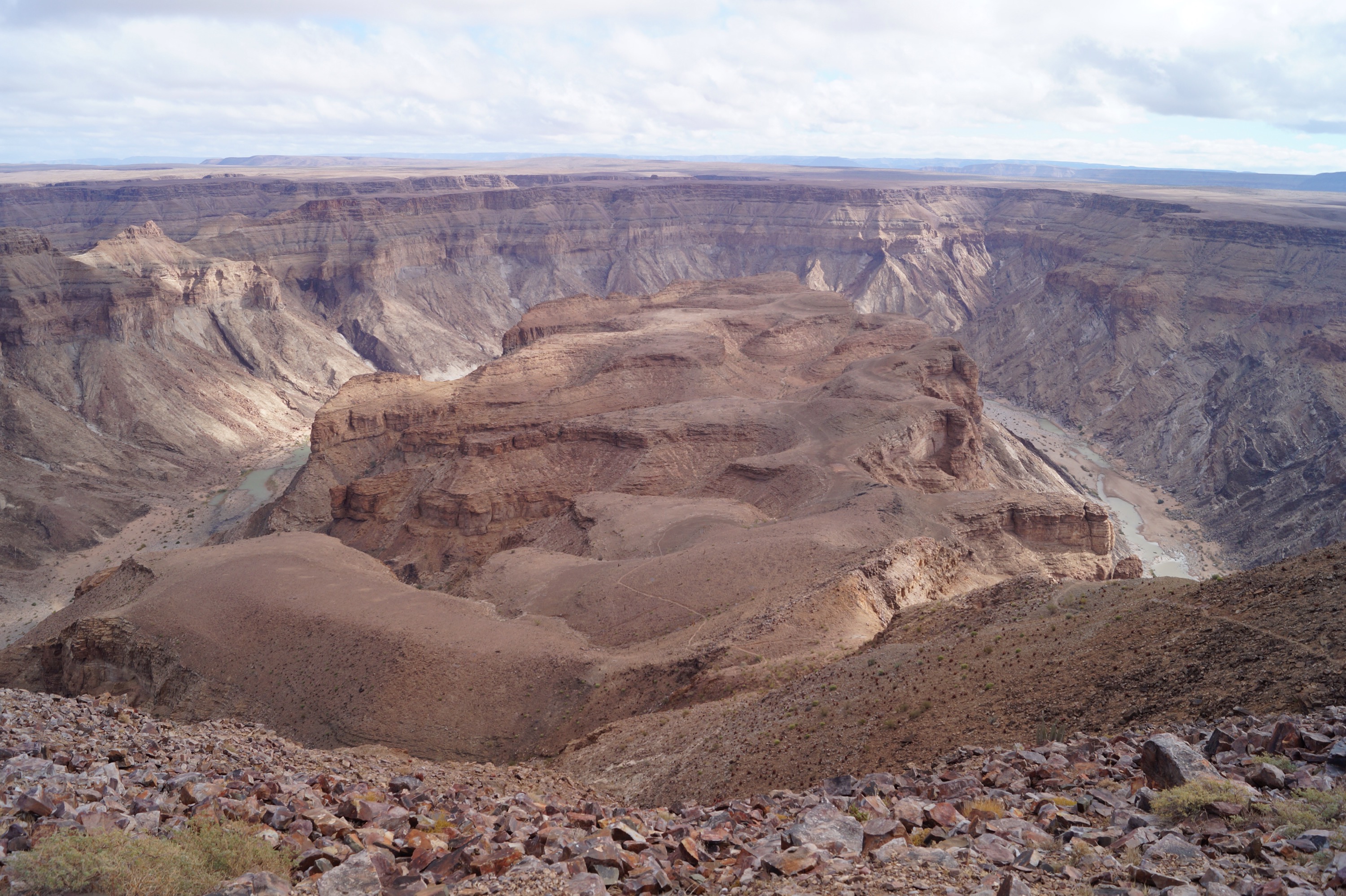
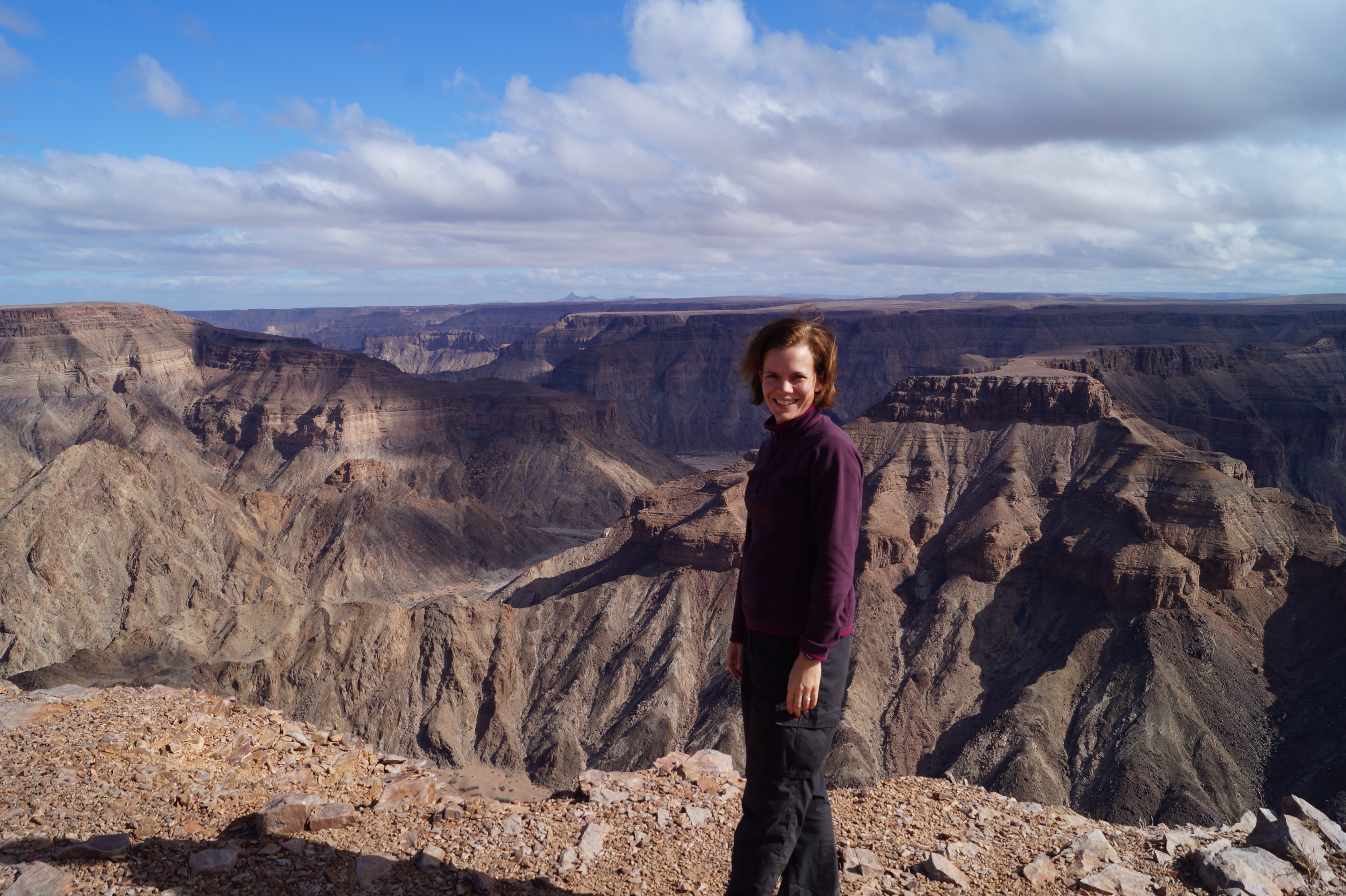 We spent the night camping at the Canon Roadhouse, an interesting place in the middle of the desert. The grounds were full of old decaying cars and some of these also featured in the restaurant and bar. We had a lovely meal there where I sampled Gemsbok which was very tasty. As we were finishing dinner a live Gemsbok walked into the car park right up to the restaurant. I guess no one told him what was on the menu.
We spent the night camping at the Canon Roadhouse, an interesting place in the middle of the desert. The grounds were full of old decaying cars and some of these also featured in the restaurant and bar. We had a lovely meal there where I sampled Gemsbok which was very tasty. As we were finishing dinner a live Gemsbok walked into the car park right up to the restaurant. I guess no one told him what was on the menu.
 It was lovely been isolated in the desert and whilst it was cold at night the sky was crystal clear with the most amazing stars. Each night we could see the planet Venus rising with Jupiter more faintly next to it. The stillness and silence was very relaxing and it was lovely siting out in he morning with a cup of coffee and been warmed by the morning sun.
We left the Roadhouse and headed to Luderitz. The scenery on the drive was epic with vast spaces of nothingness. As we approached Luderitz the sand dunes closed in on the road and sand was drifting over it been blown by the wind.
It was lovely been isolated in the desert and whilst it was cold at night the sky was crystal clear with the most amazing stars. Each night we could see the planet Venus rising with Jupiter more faintly next to it. The stillness and silence was very relaxing and it was lovely siting out in he morning with a cup of coffee and been warmed by the morning sun.
We left the Roadhouse and headed to Luderitz. The scenery on the drive was epic with vast spaces of nothingness. As we approached Luderitz the sand dunes closed in on the road and sand was drifting over it been blown by the wind.
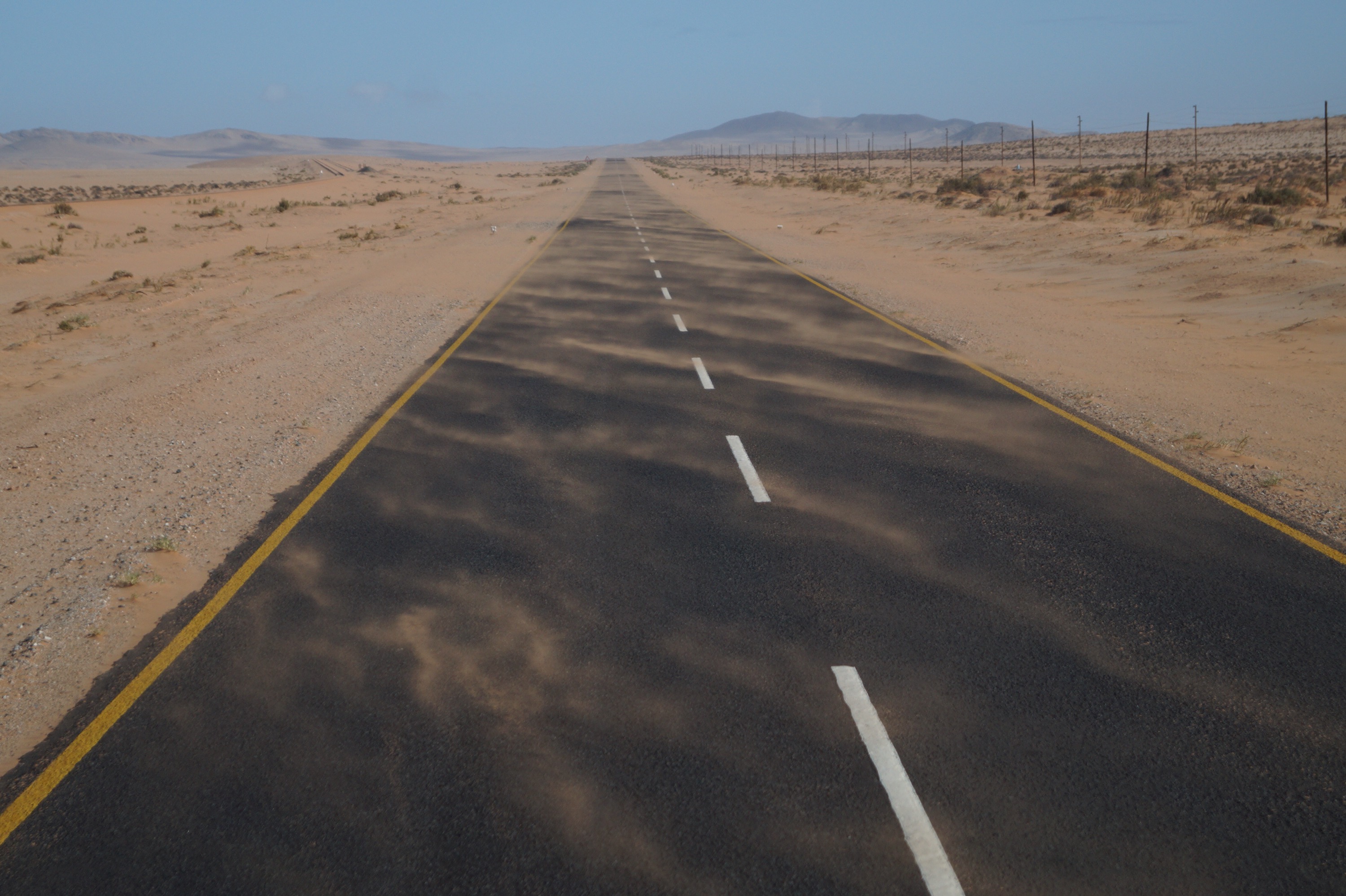 The highlight of our visit to Luderitz was visiting the ghost town of Kolmanskop. In the early 1900s diamonds were discovered in the desert near her and a diamond rush ensured. This town was built with mansions, workers housing a concert hall, shops etc. With diamonds came wealth so although the town was in the middle of the desert, the people still lived very comfortably with all sorts of luxuries shipped in. By the 1930s the town went into decline and it was completely abandoned by around 1950. After that it was just left to the be taken back over by the desert. Whilst diamonds are still mined in the area the town has never been reoccupied and now is abandoned. The buildings are crumbling and sand has drifted into the buildings. We had a great time on the tour and then wandering around on our own. The girls loved hearing about how people lived a 100 years ago.
The highlight of our visit to Luderitz was visiting the ghost town of Kolmanskop. In the early 1900s diamonds were discovered in the desert near her and a diamond rush ensured. This town was built with mansions, workers housing a concert hall, shops etc. With diamonds came wealth so although the town was in the middle of the desert, the people still lived very comfortably with all sorts of luxuries shipped in. By the 1930s the town went into decline and it was completely abandoned by around 1950. After that it was just left to the be taken back over by the desert. Whilst diamonds are still mined in the area the town has never been reoccupied and now is abandoned. The buildings are crumbling and sand has drifted into the buildings. We had a great time on the tour and then wandering around on our own. The girls loved hearing about how people lived a 100 years ago.
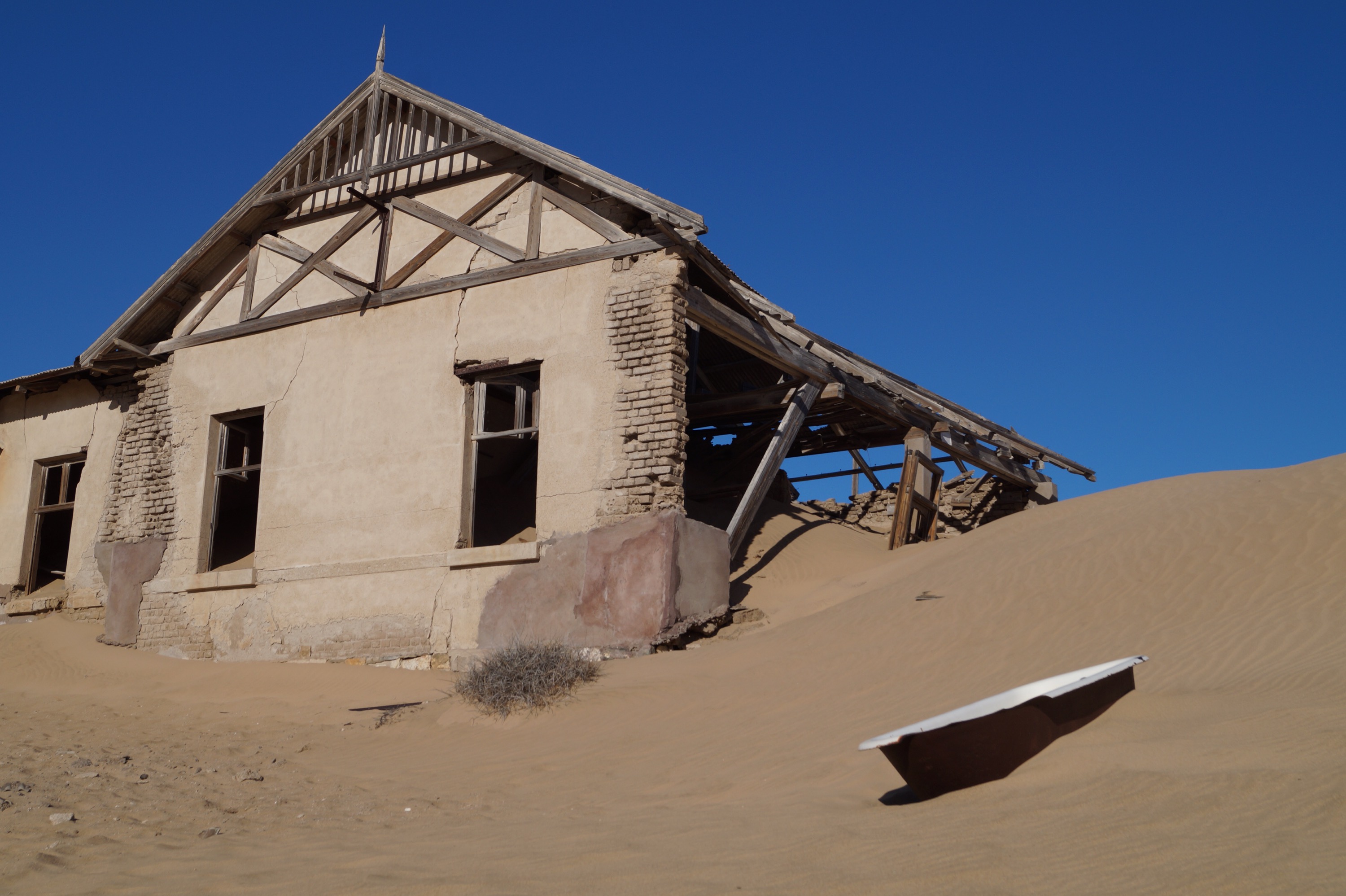
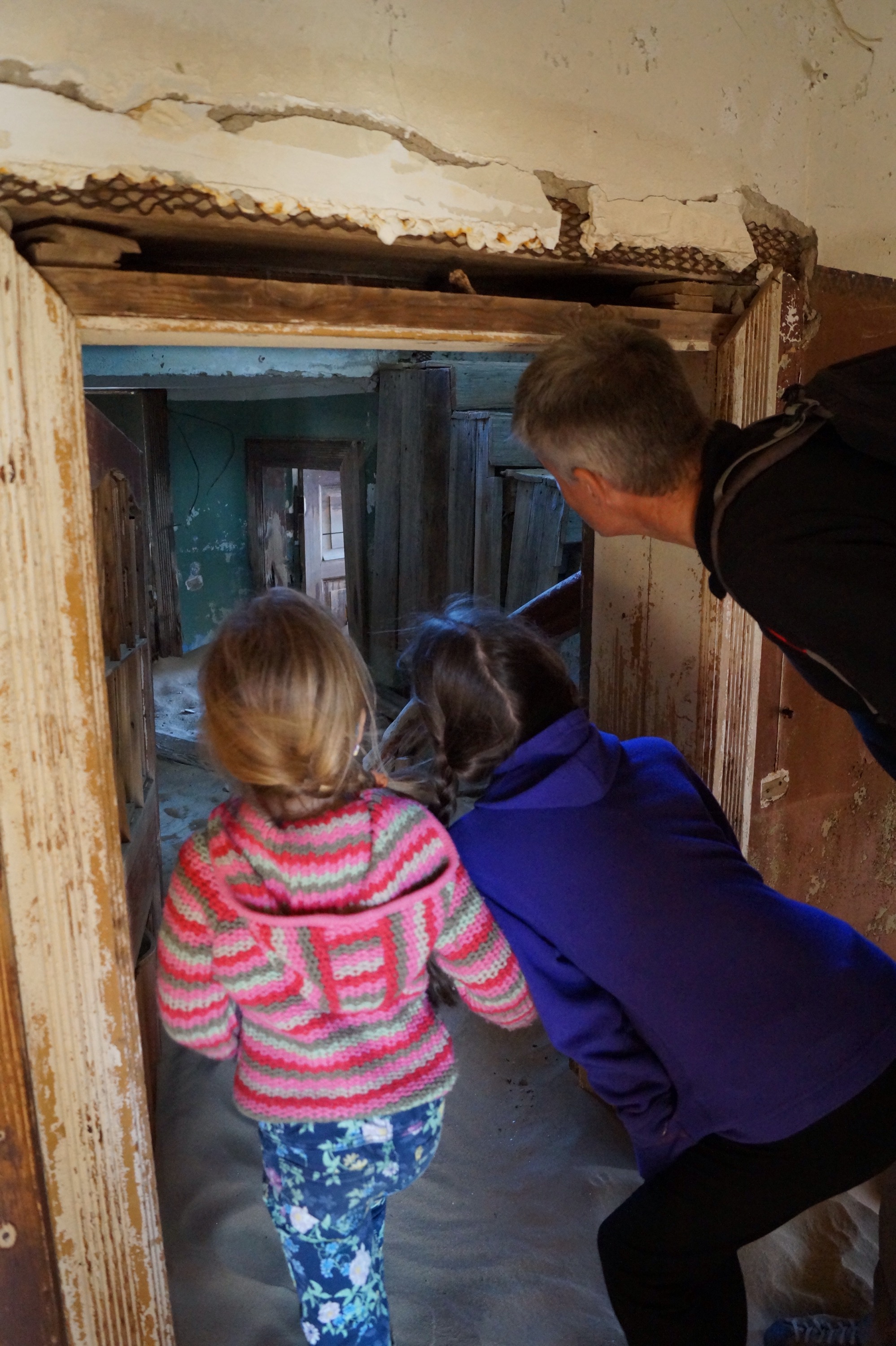
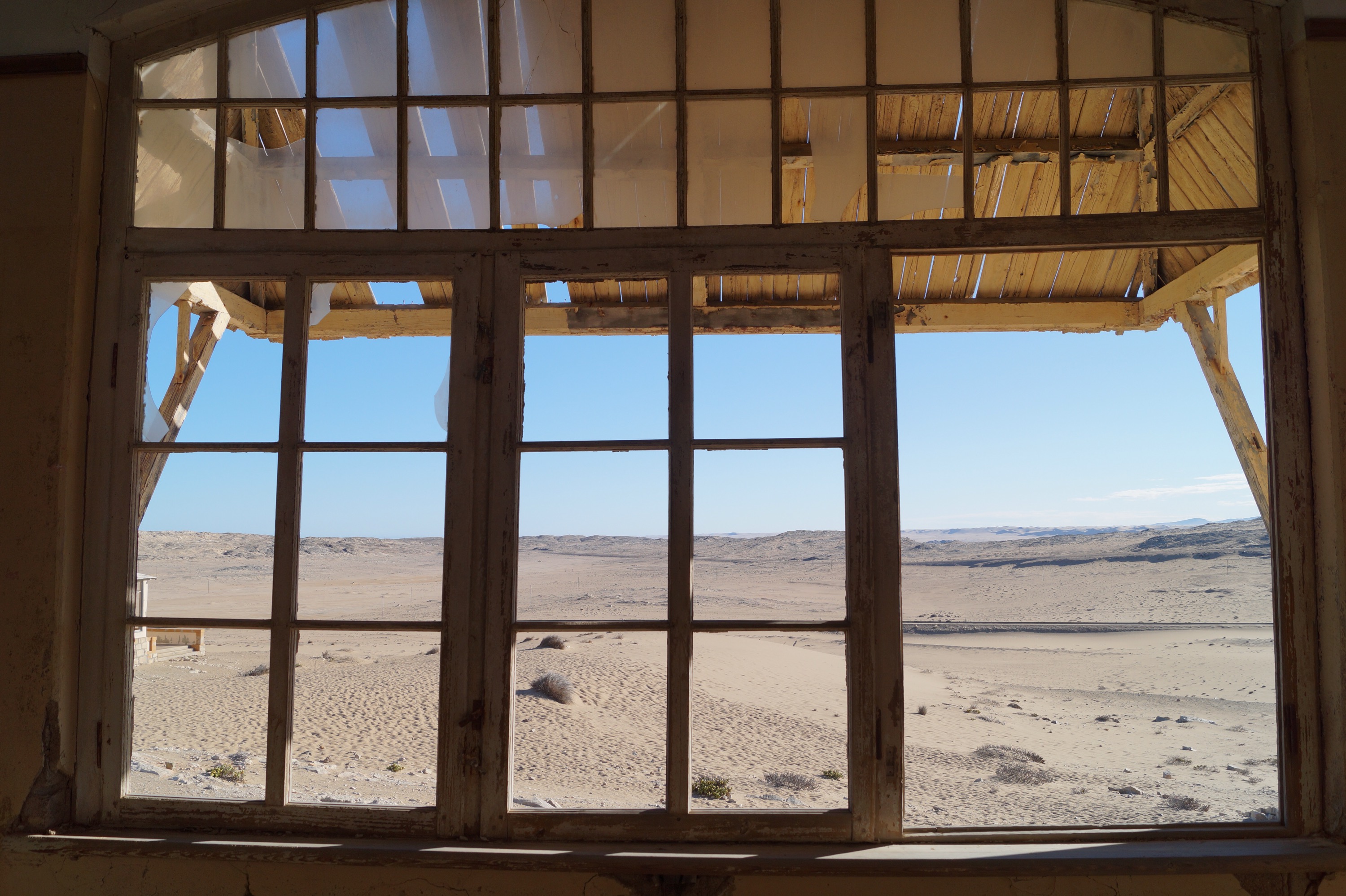
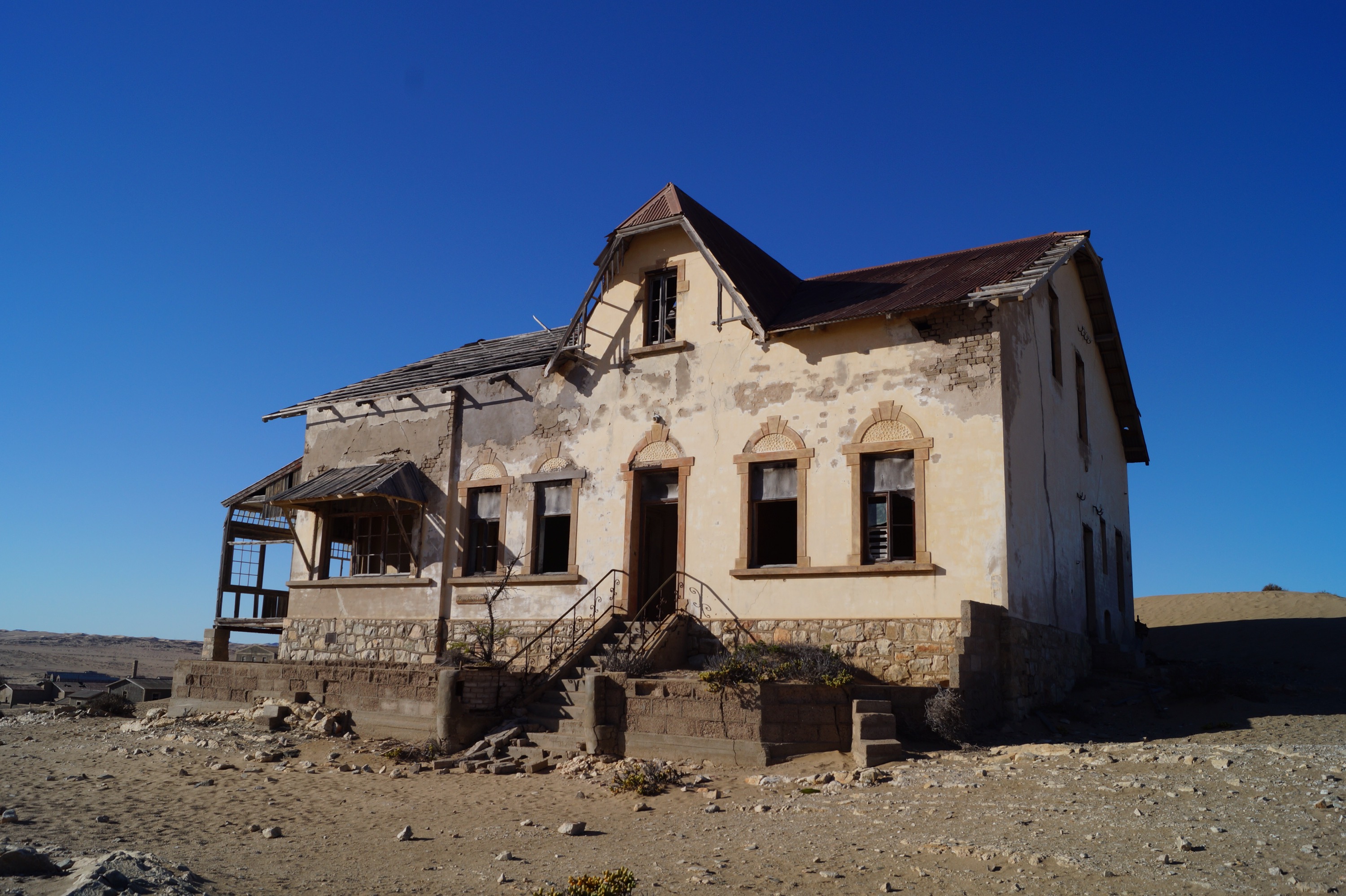

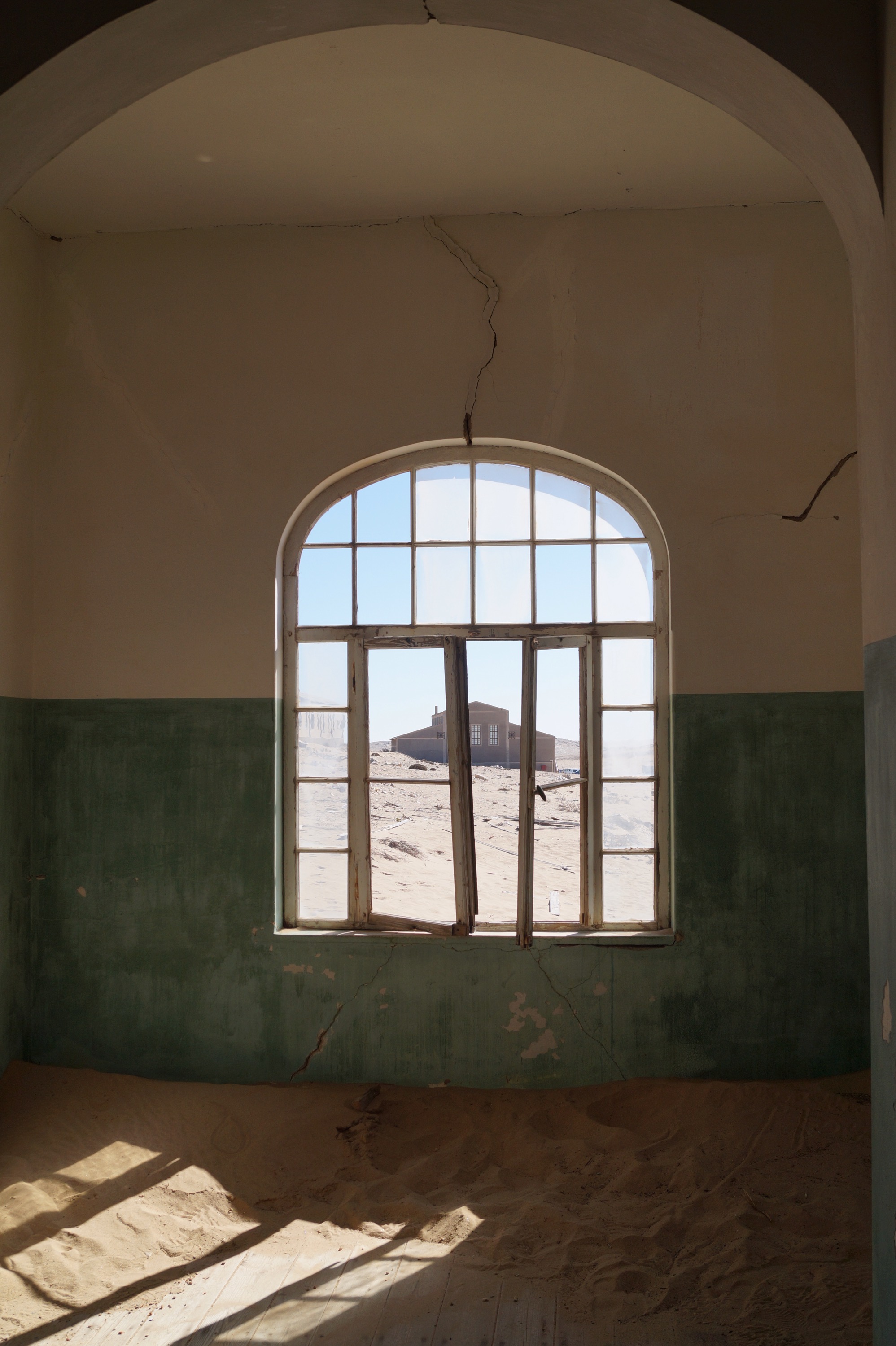
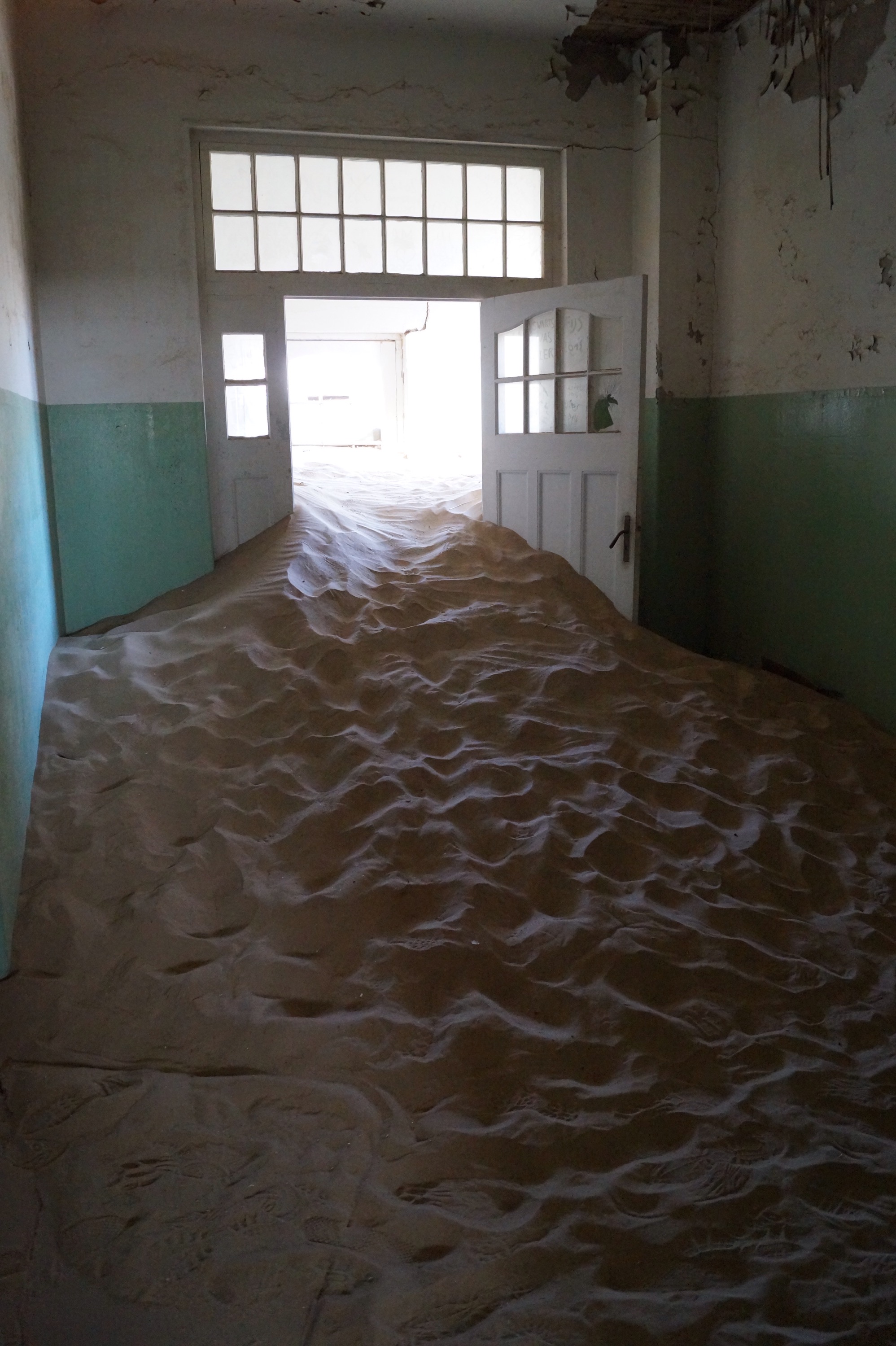
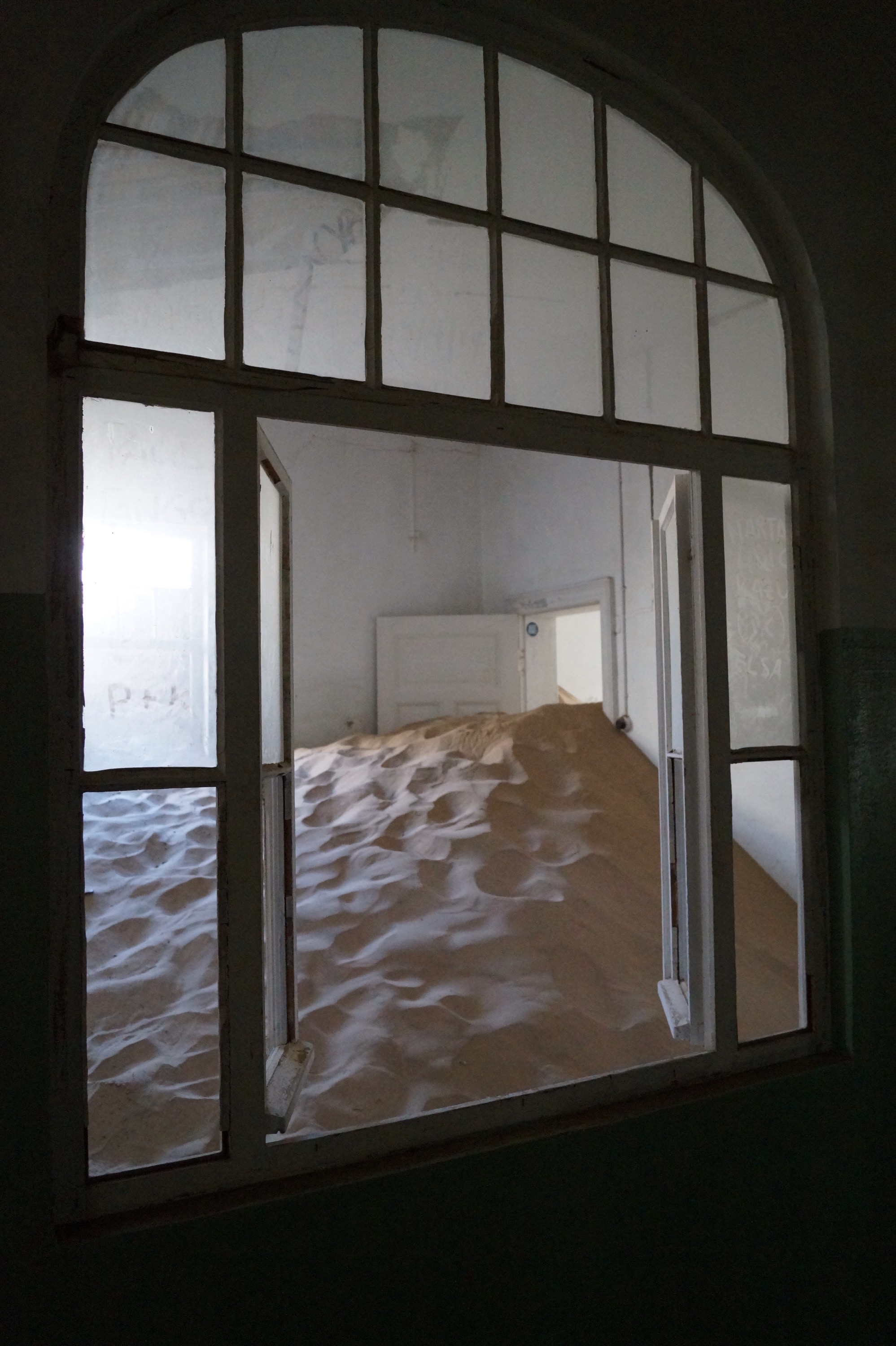 We camped in Luderitz on a penninsular jutting out into the Atlantic. This meant is was windy but we were able to find a place to camp between some rocky outcrops so that the wind whistled over the top of the truck.
We camped in Luderitz on a penninsular jutting out into the Atlantic. This meant is was windy but we were able to find a place to camp between some rocky outcrops so that the wind whistled over the top of the truck.
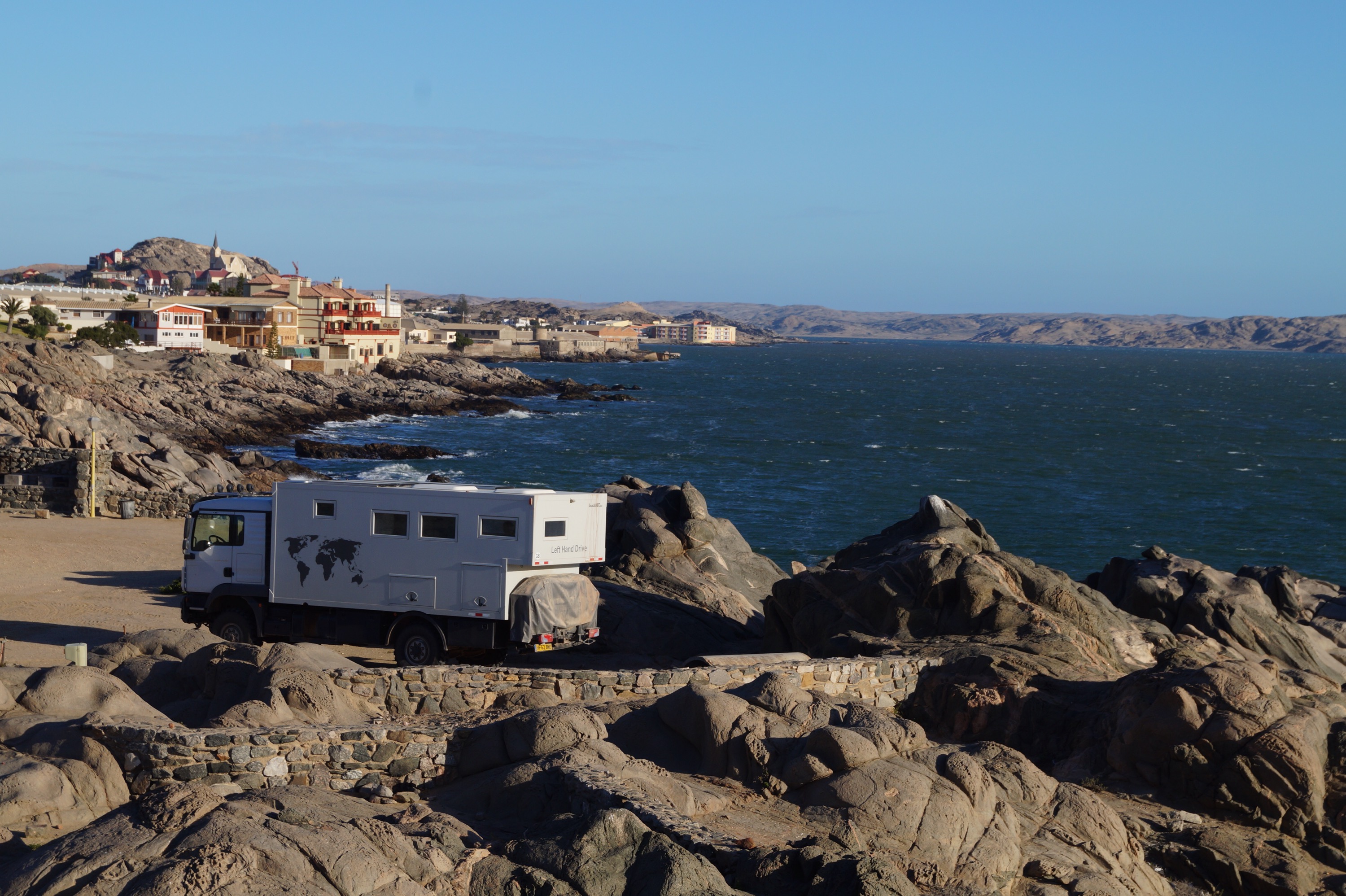 As Luderitz is the only town of any size for 100s of Kms we also used the opportunity to shop and fully stock up. It's also on the Atlantic Ocean so we could not leave without getting some fish and chips before returning again to the desert.
As Luderitz is the only town of any size for 100s of Kms we also used the opportunity to shop and fully stock up. It's also on the Atlantic Ocean so we could not leave without getting some fish and chips before returning again to the desert.

































